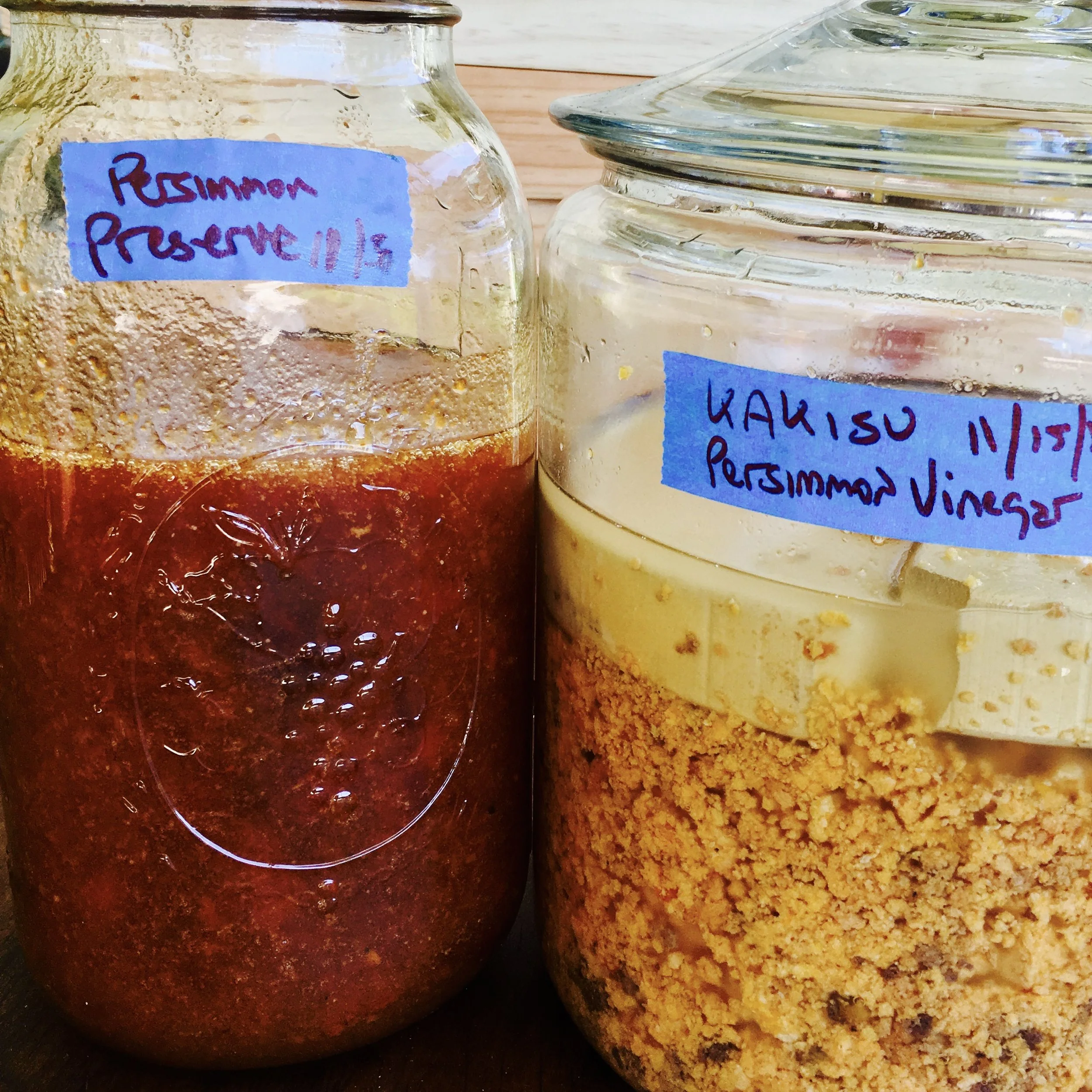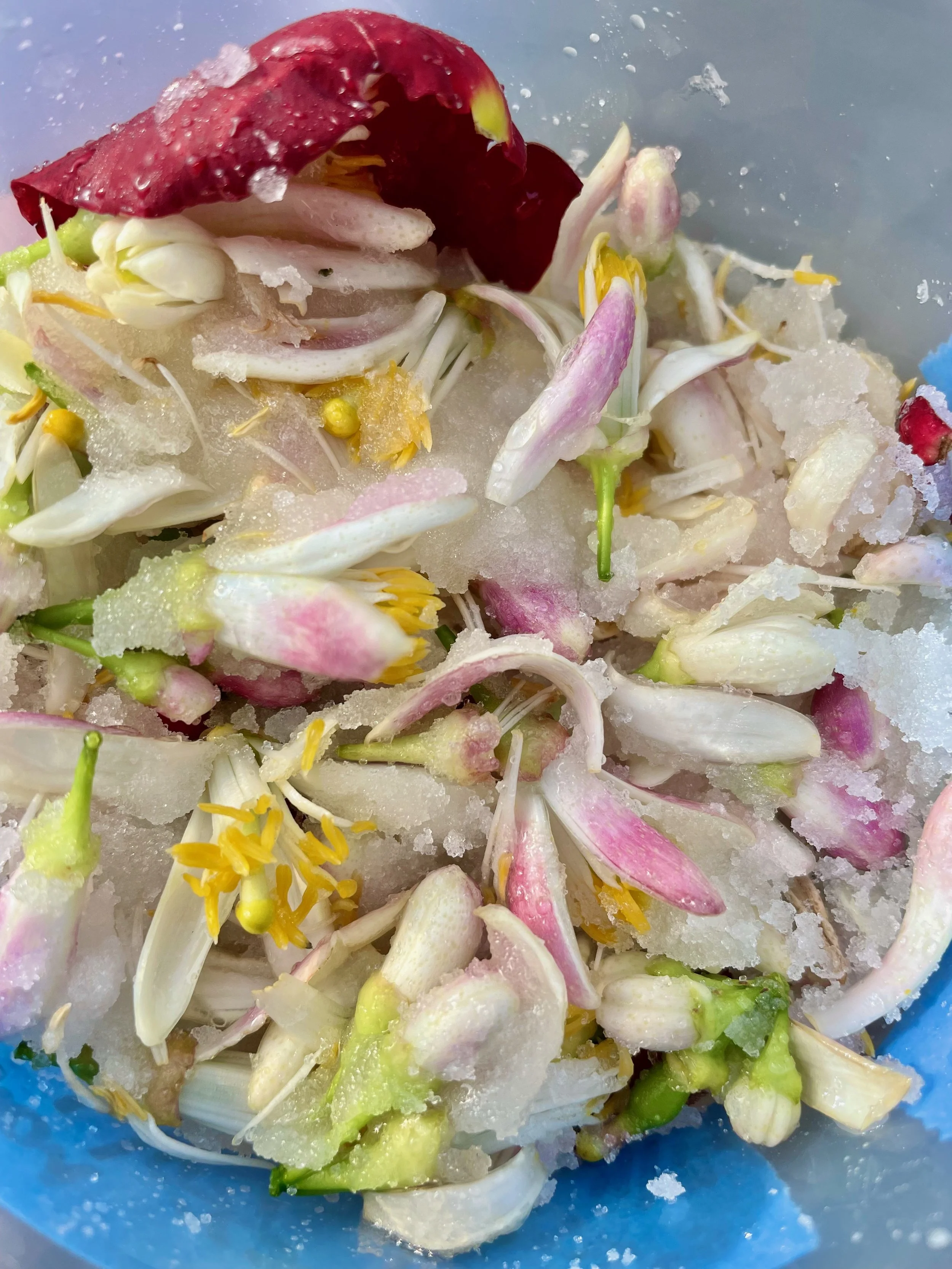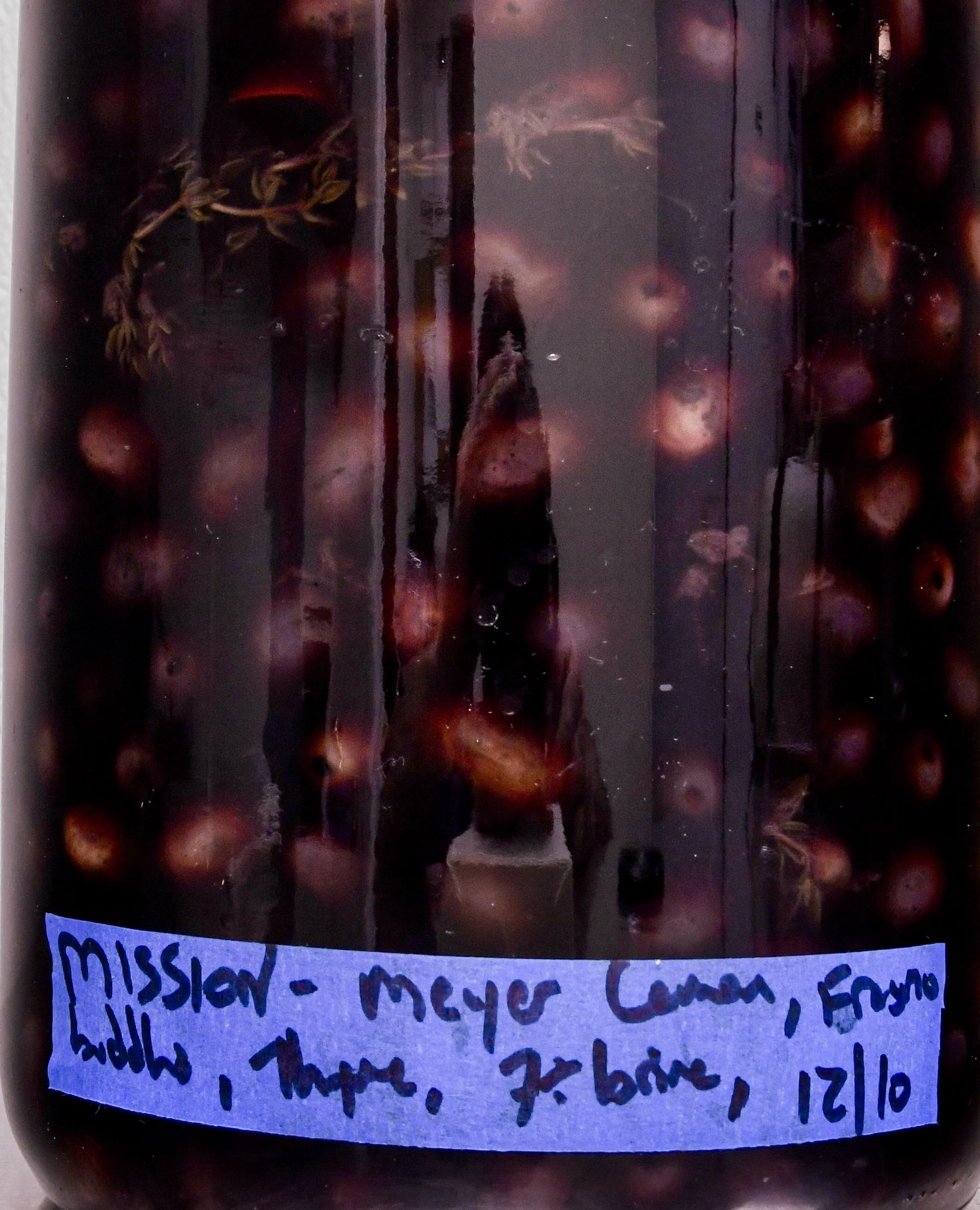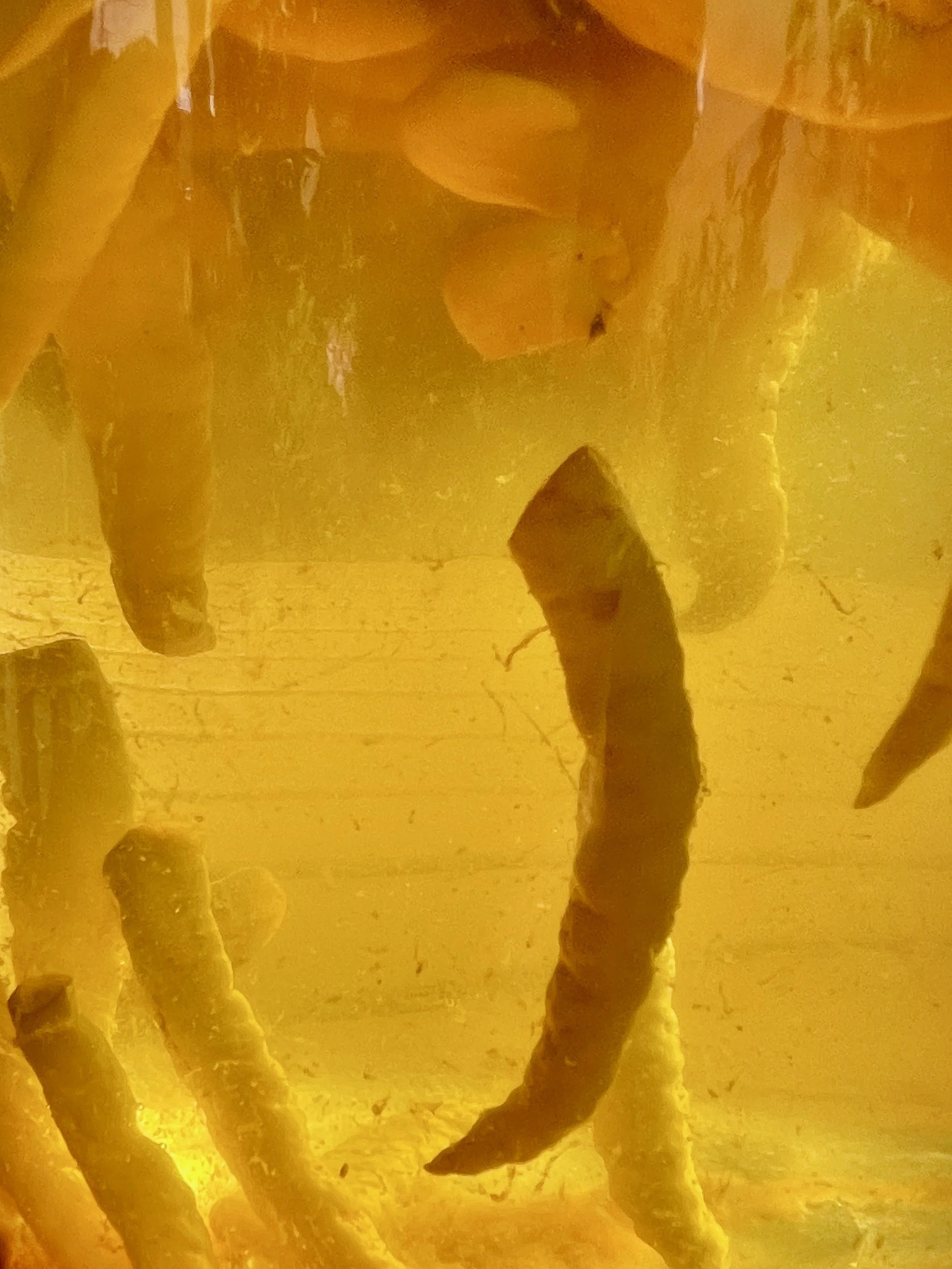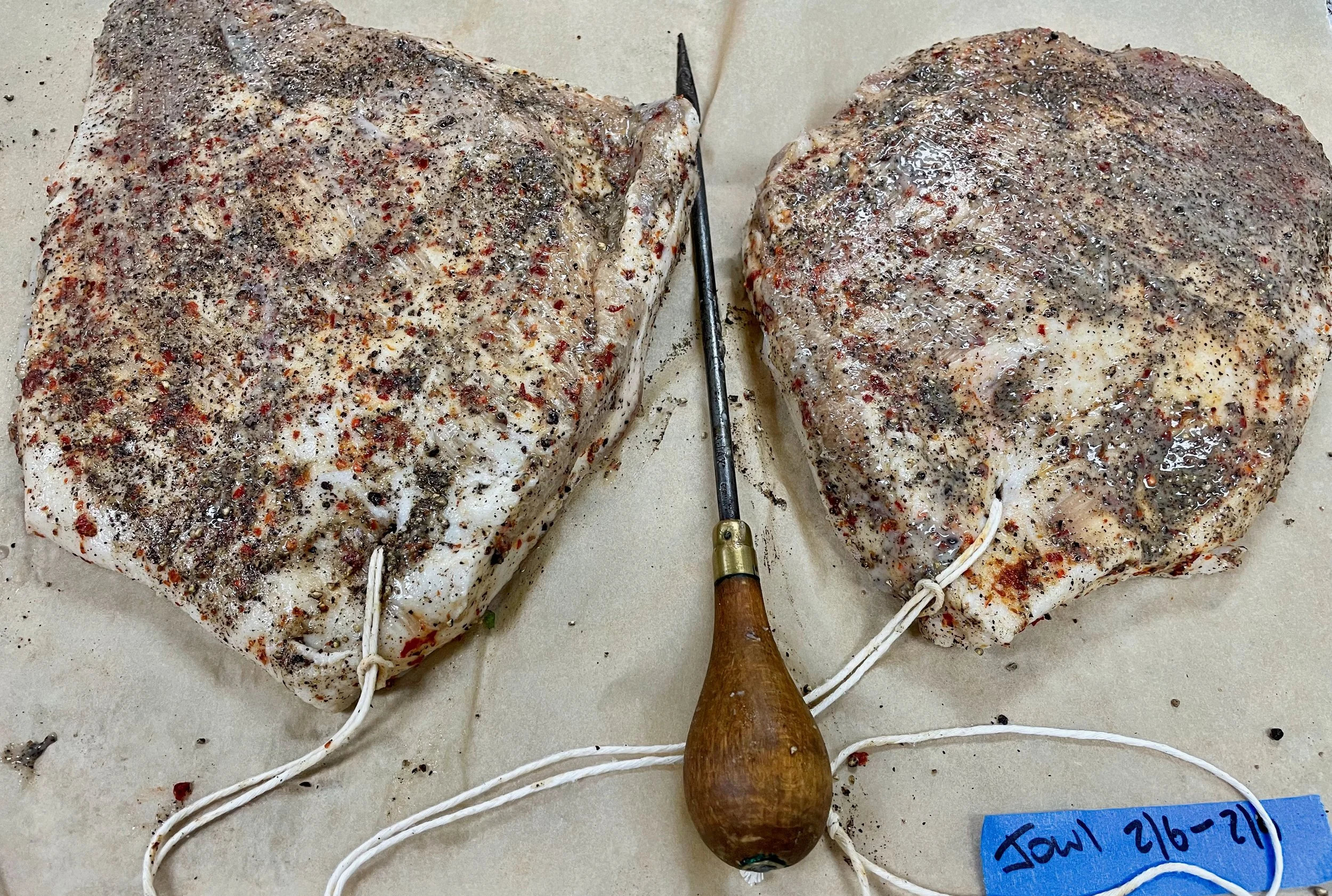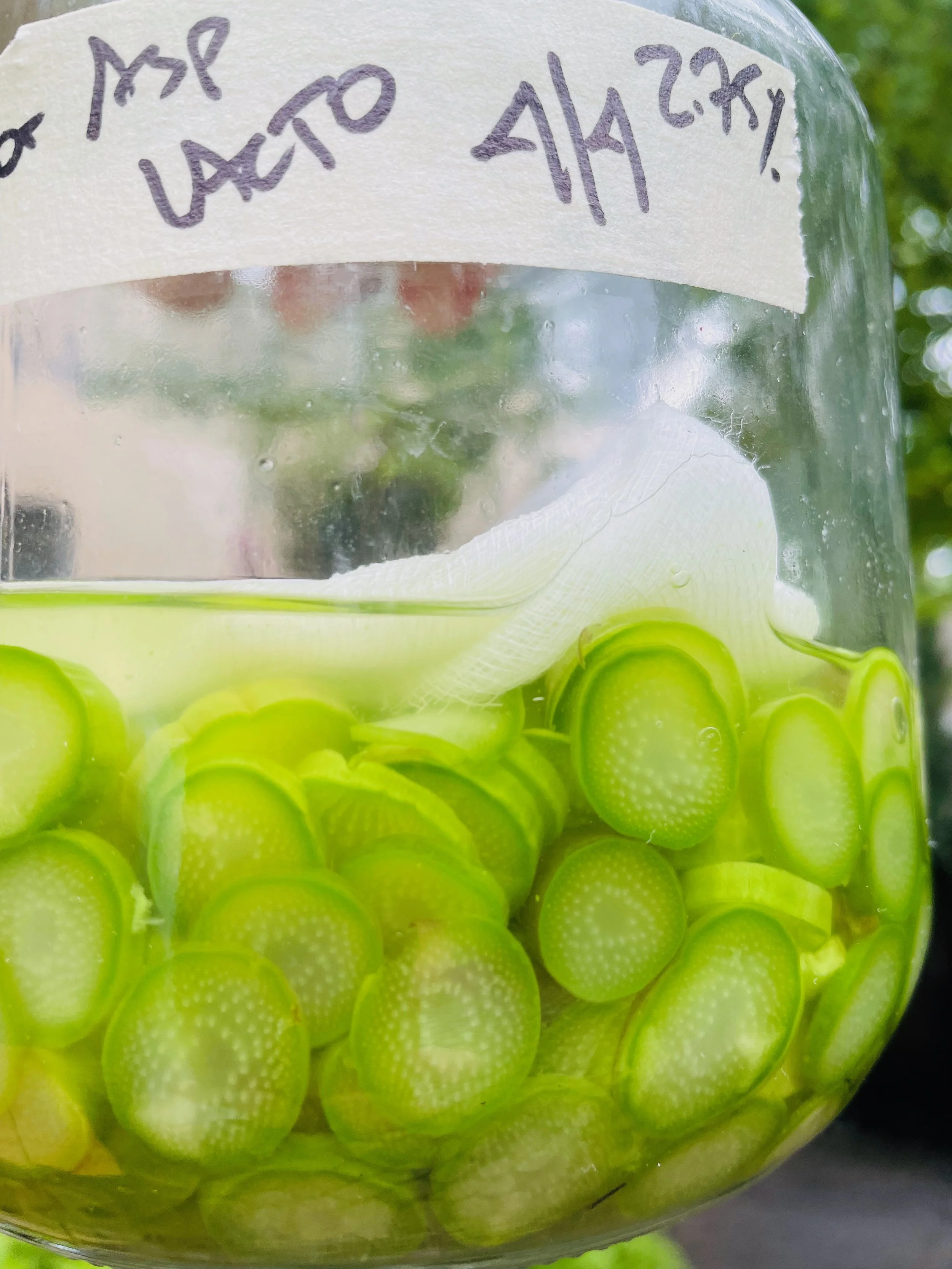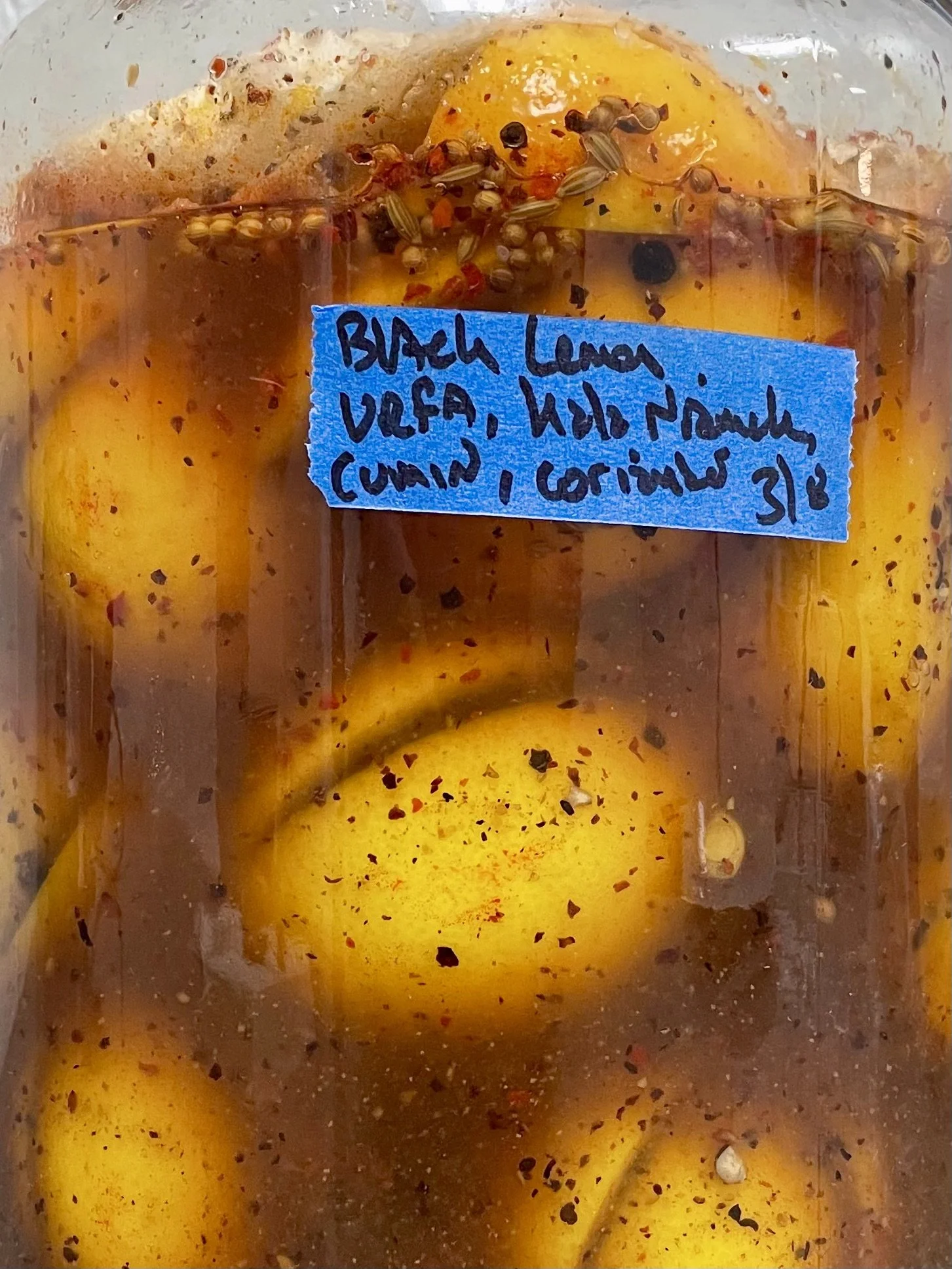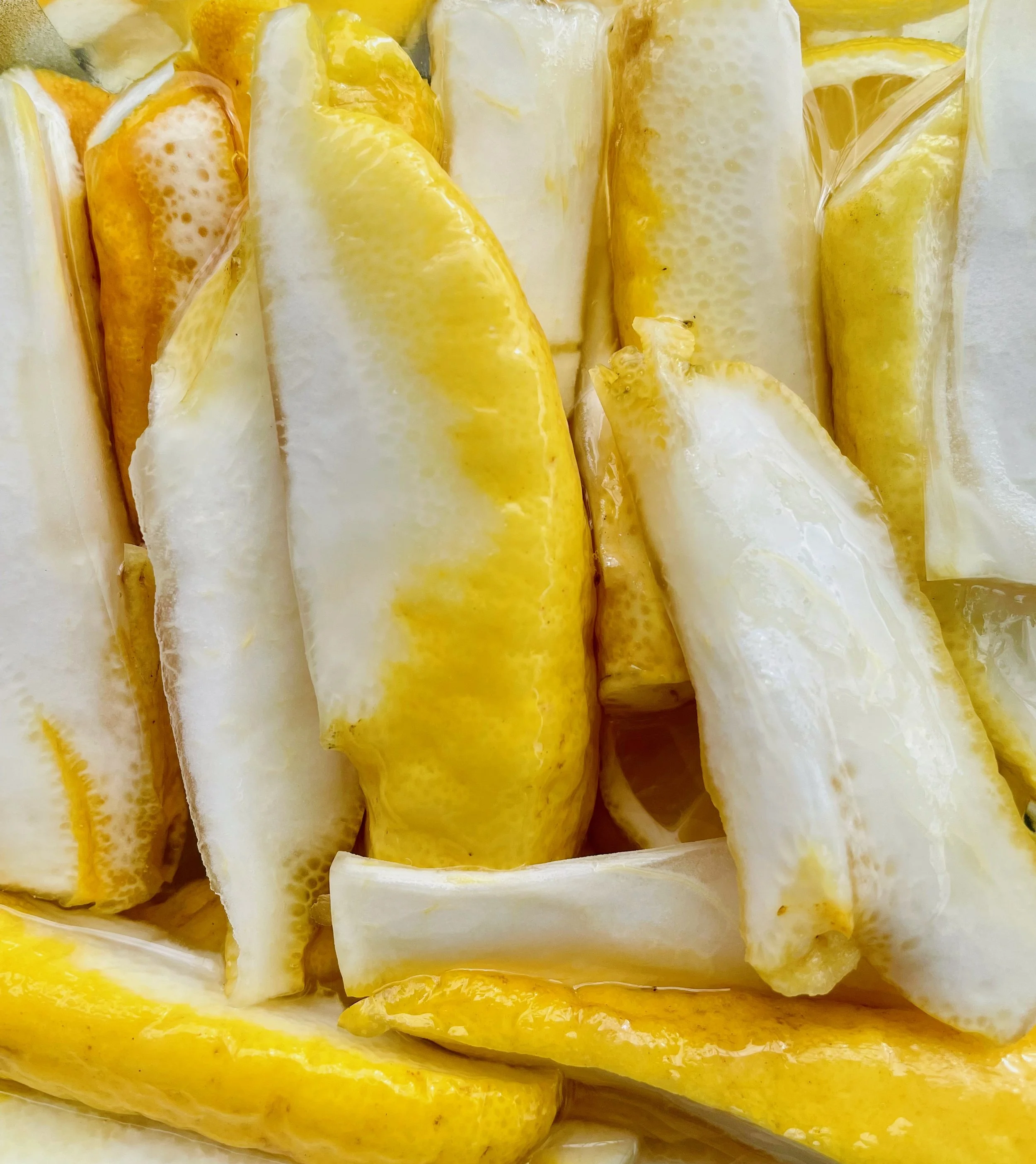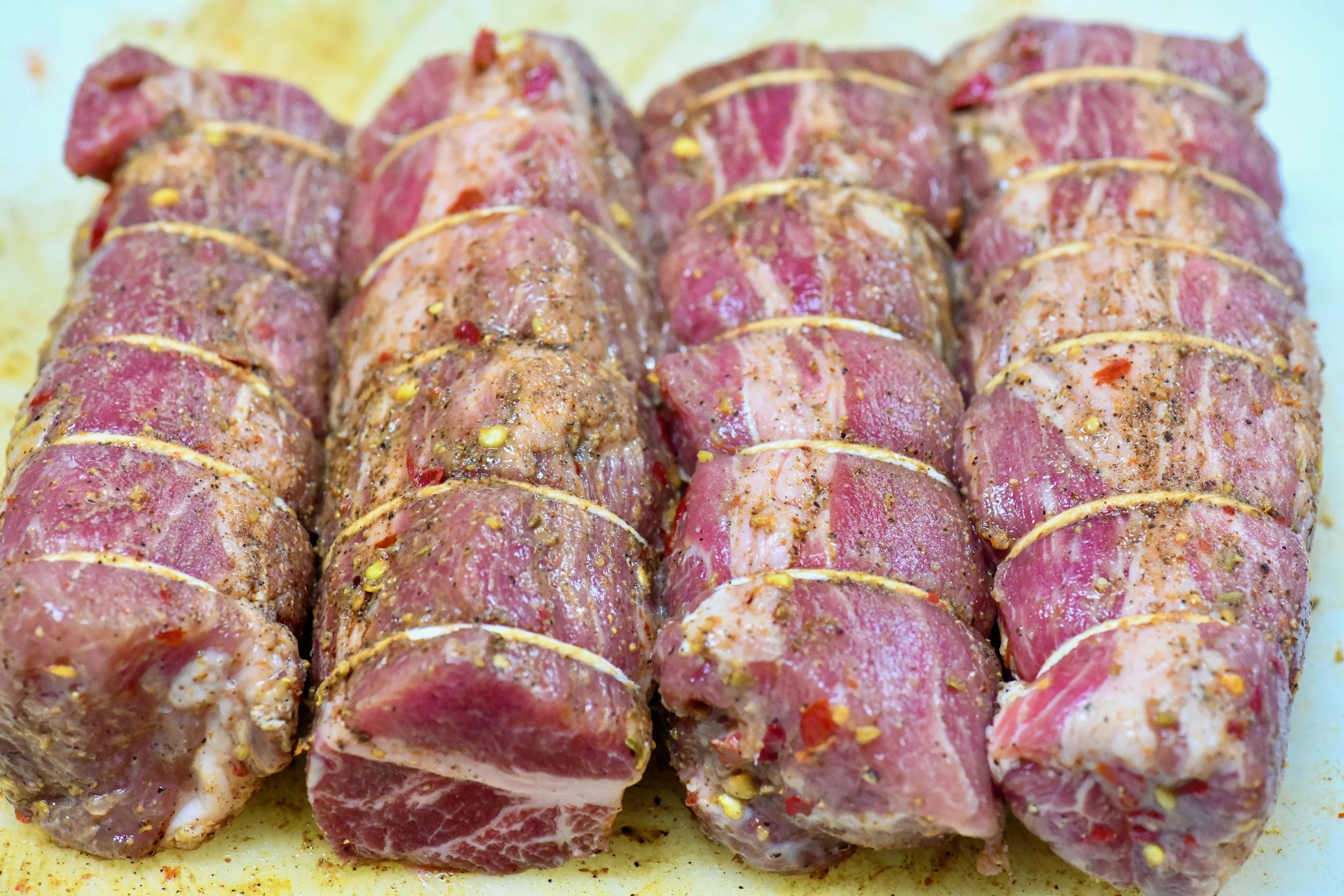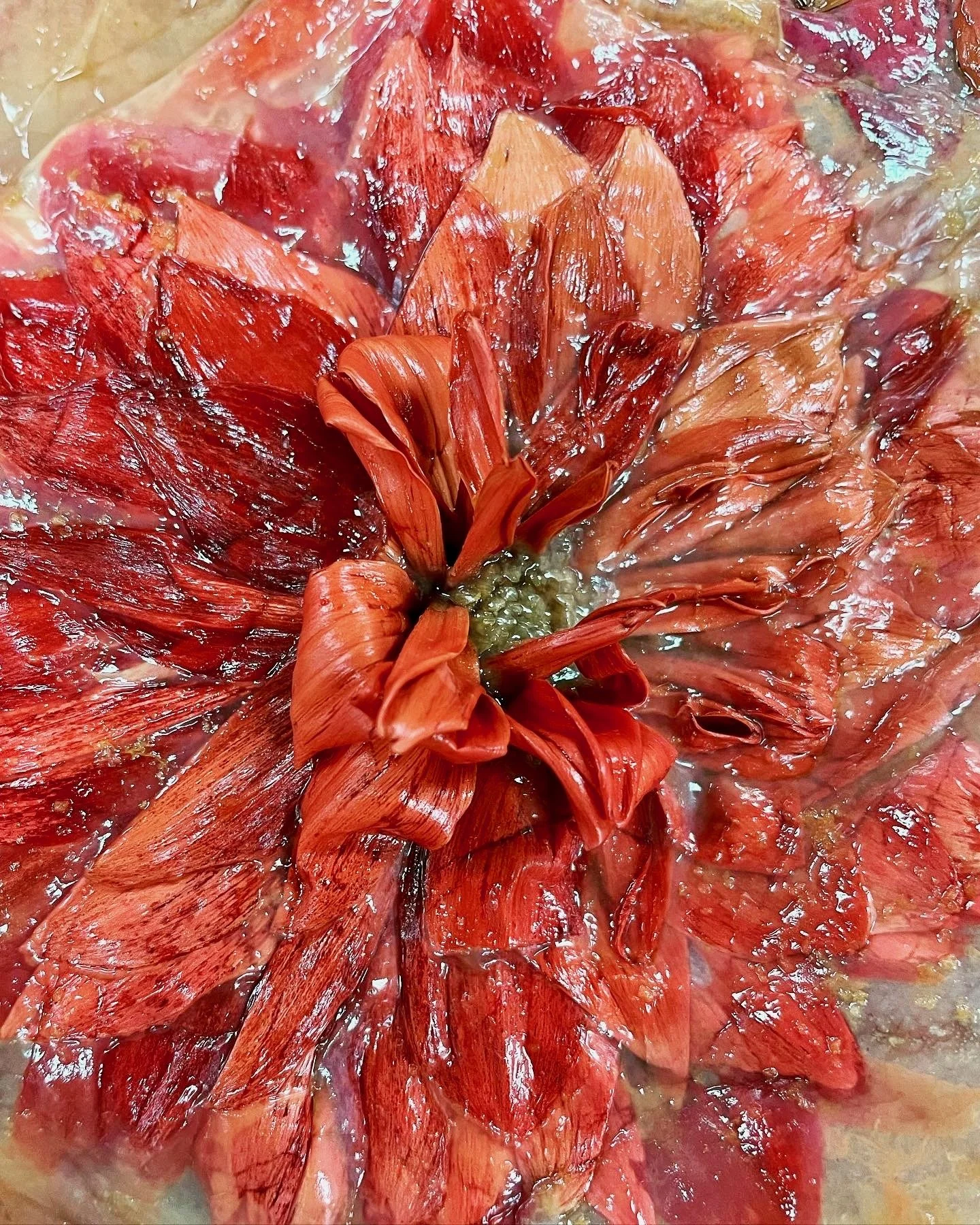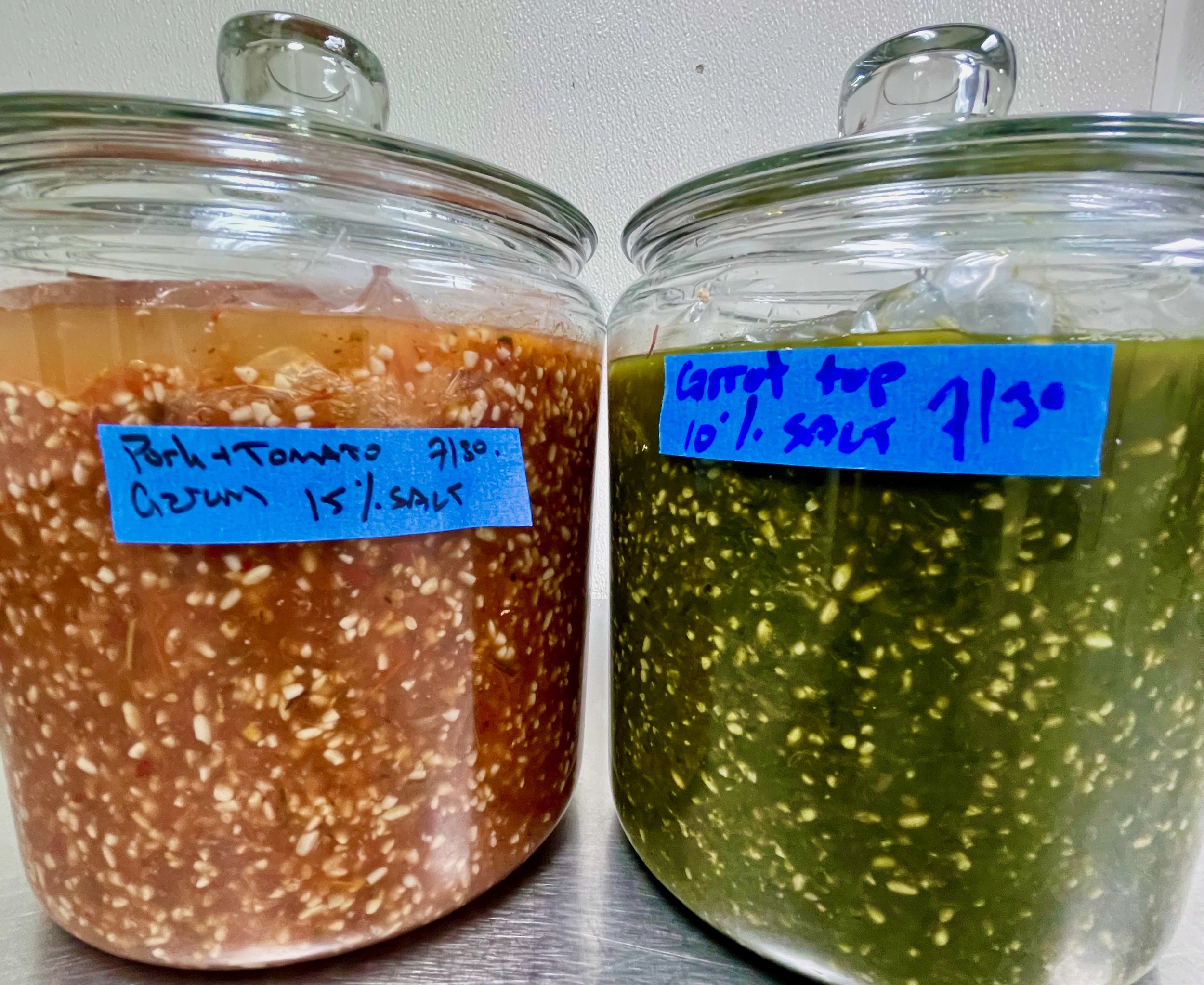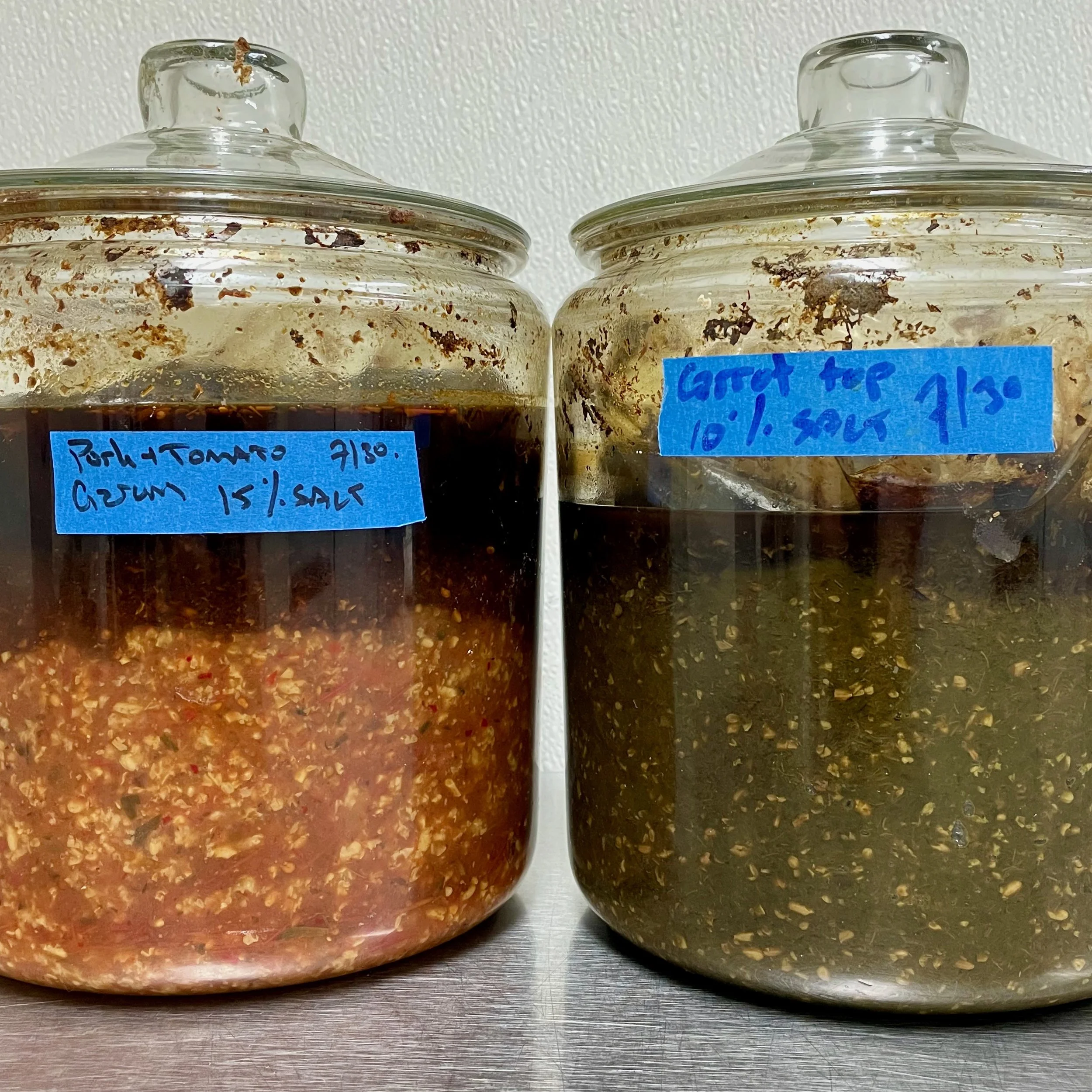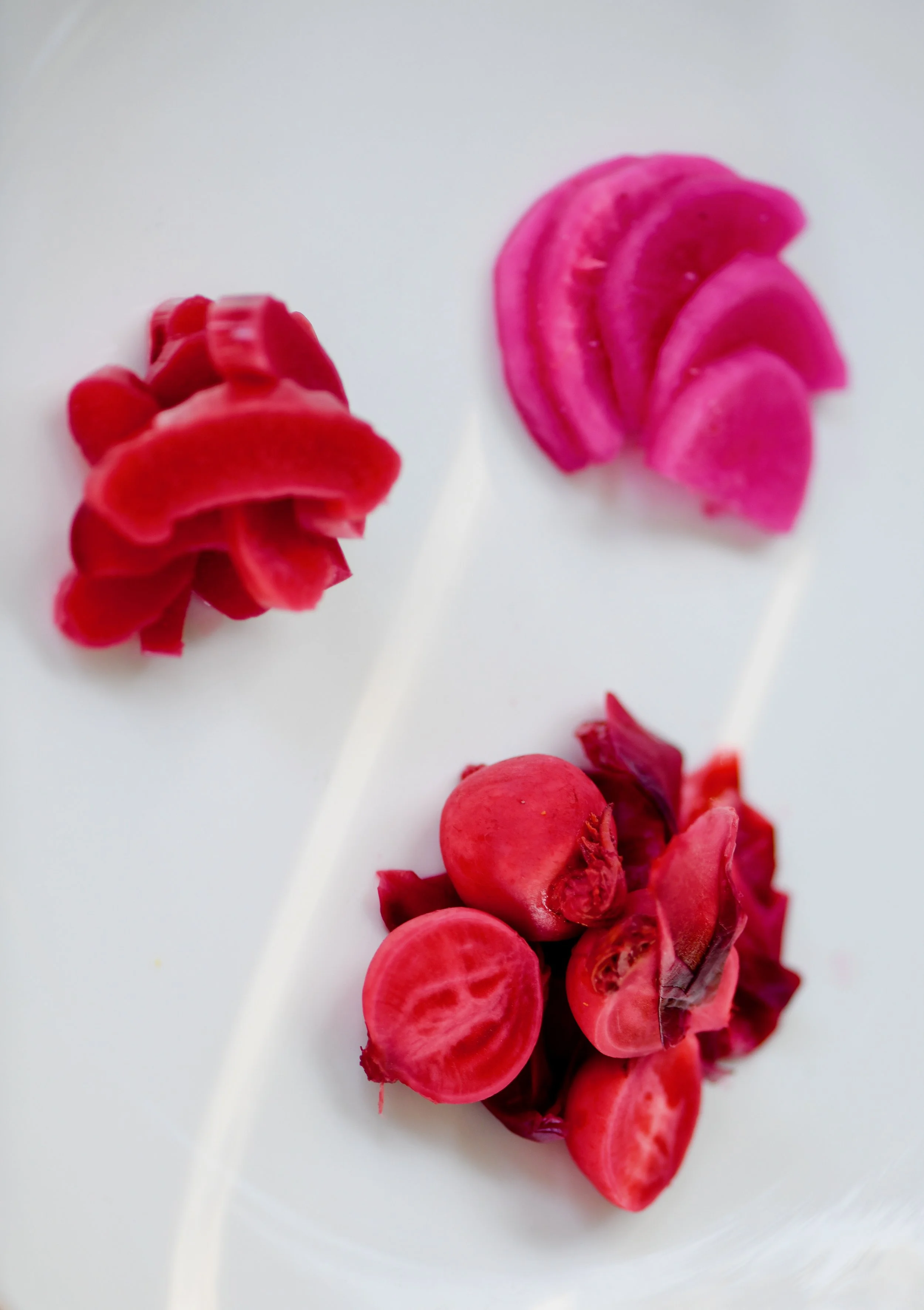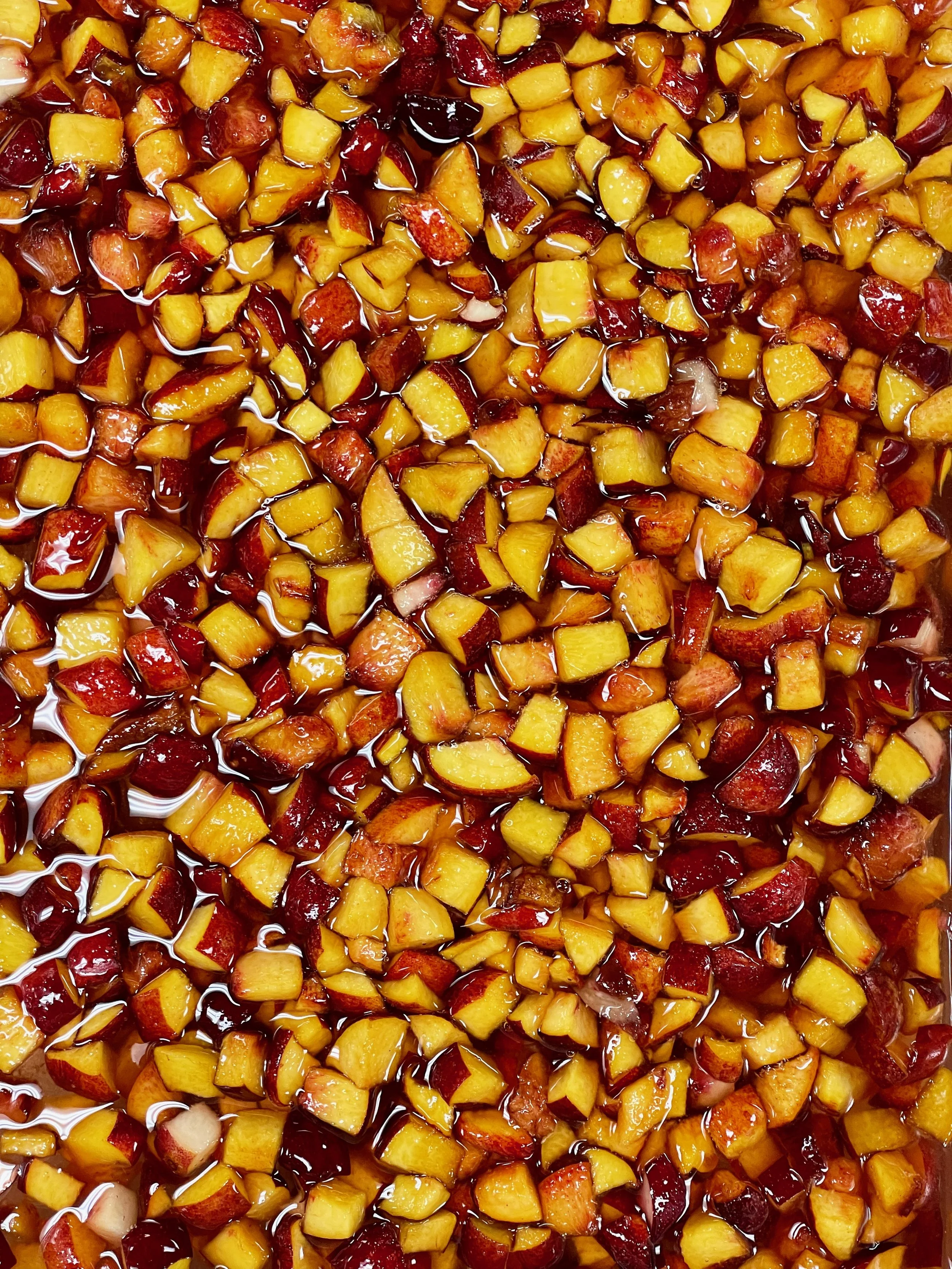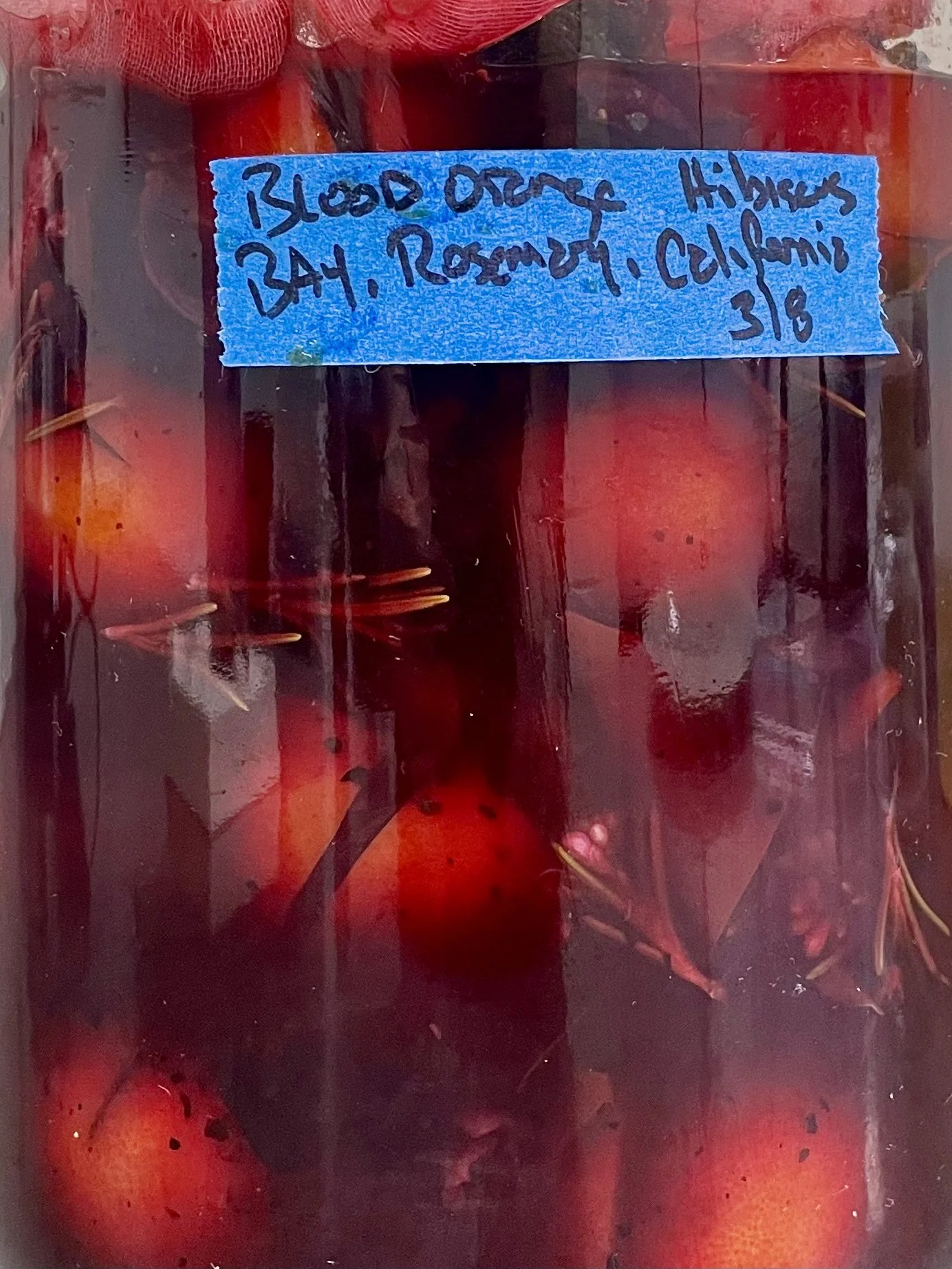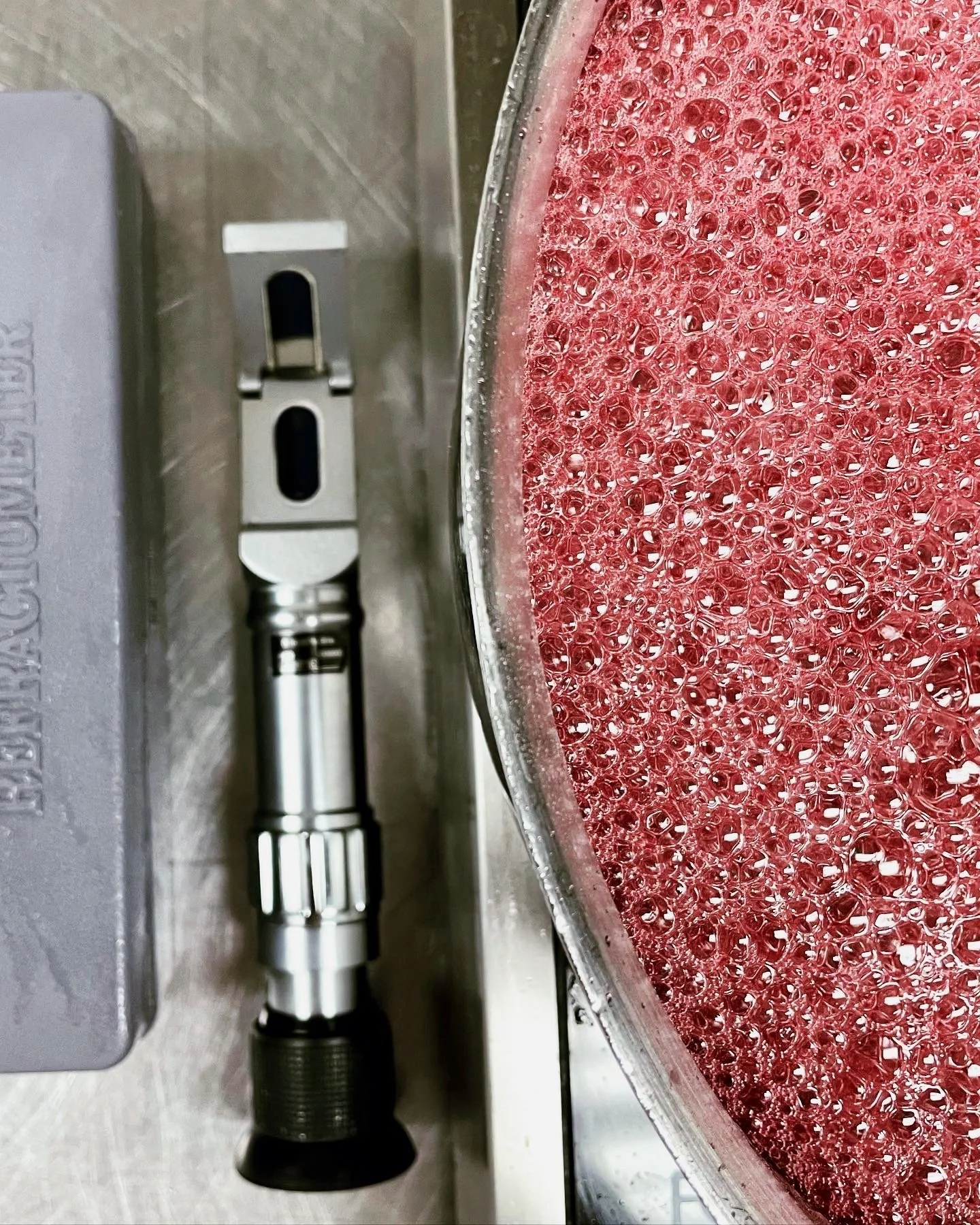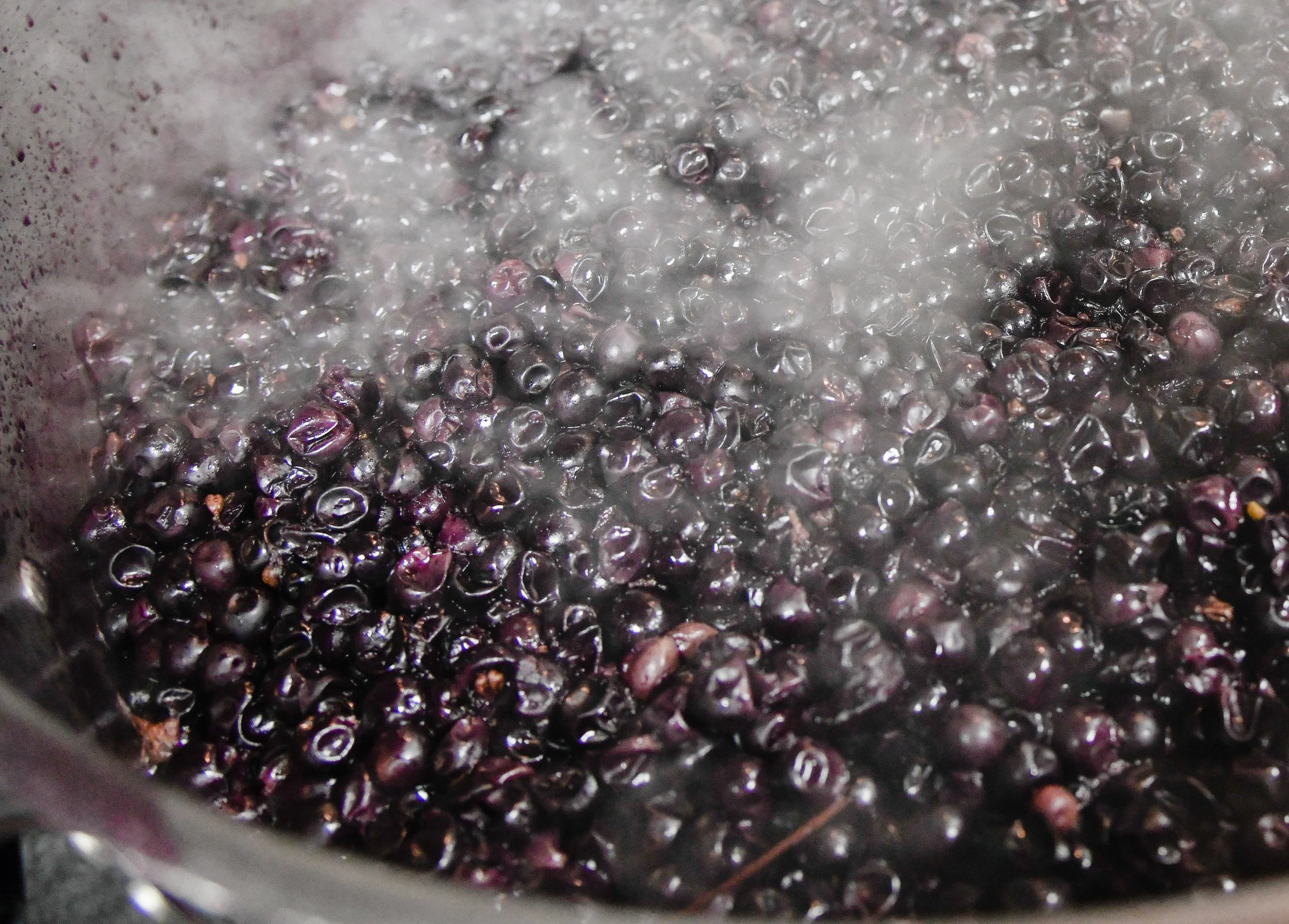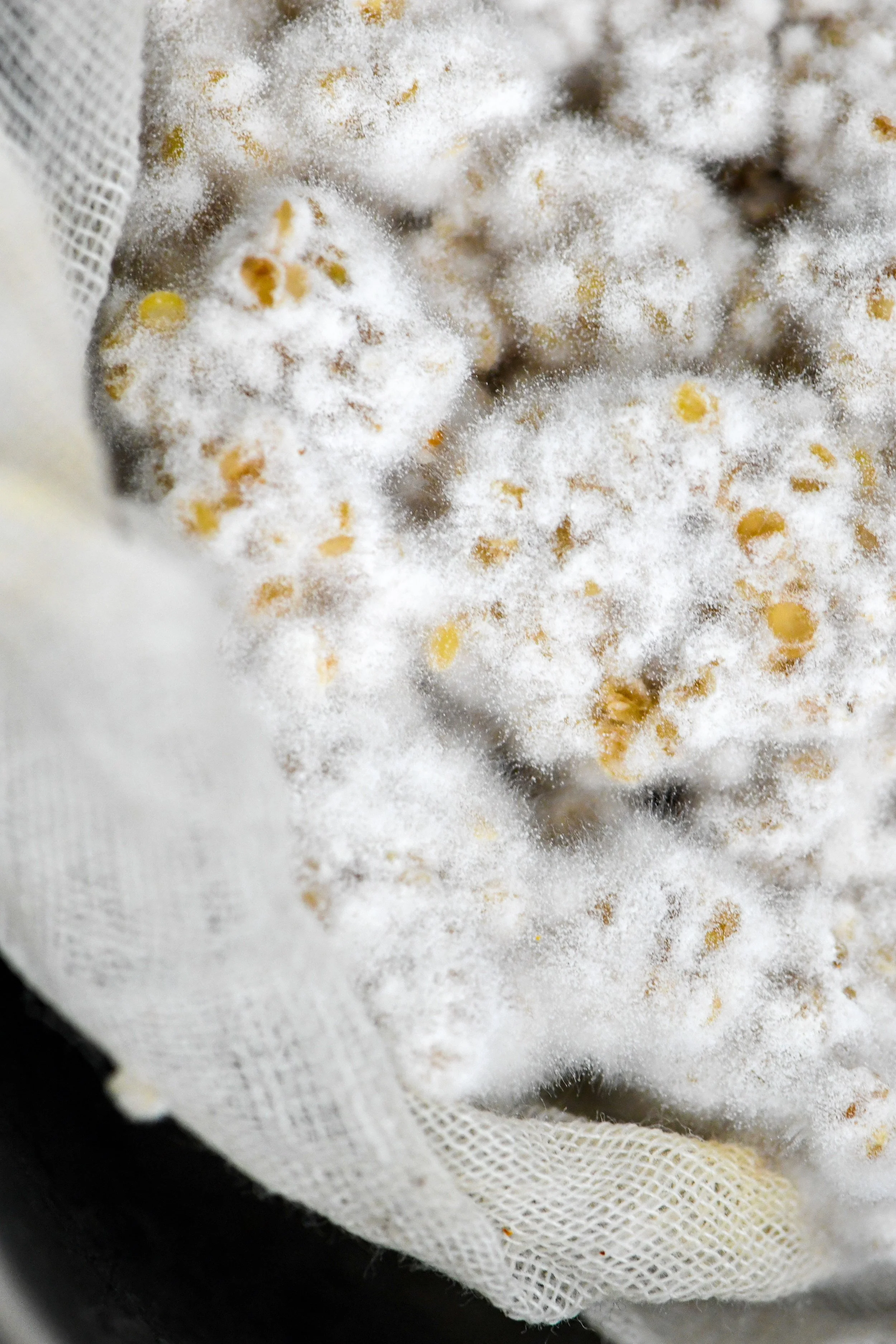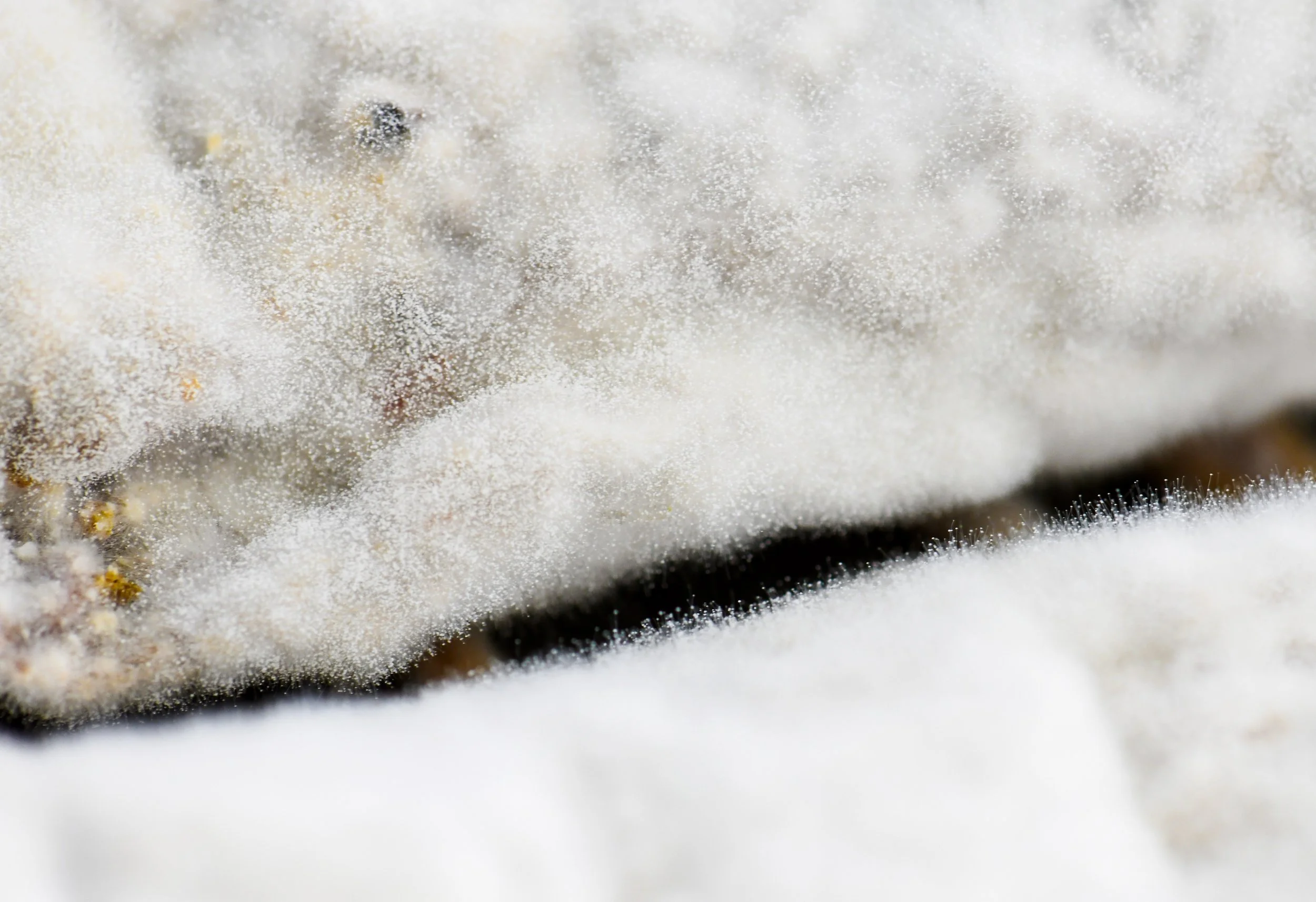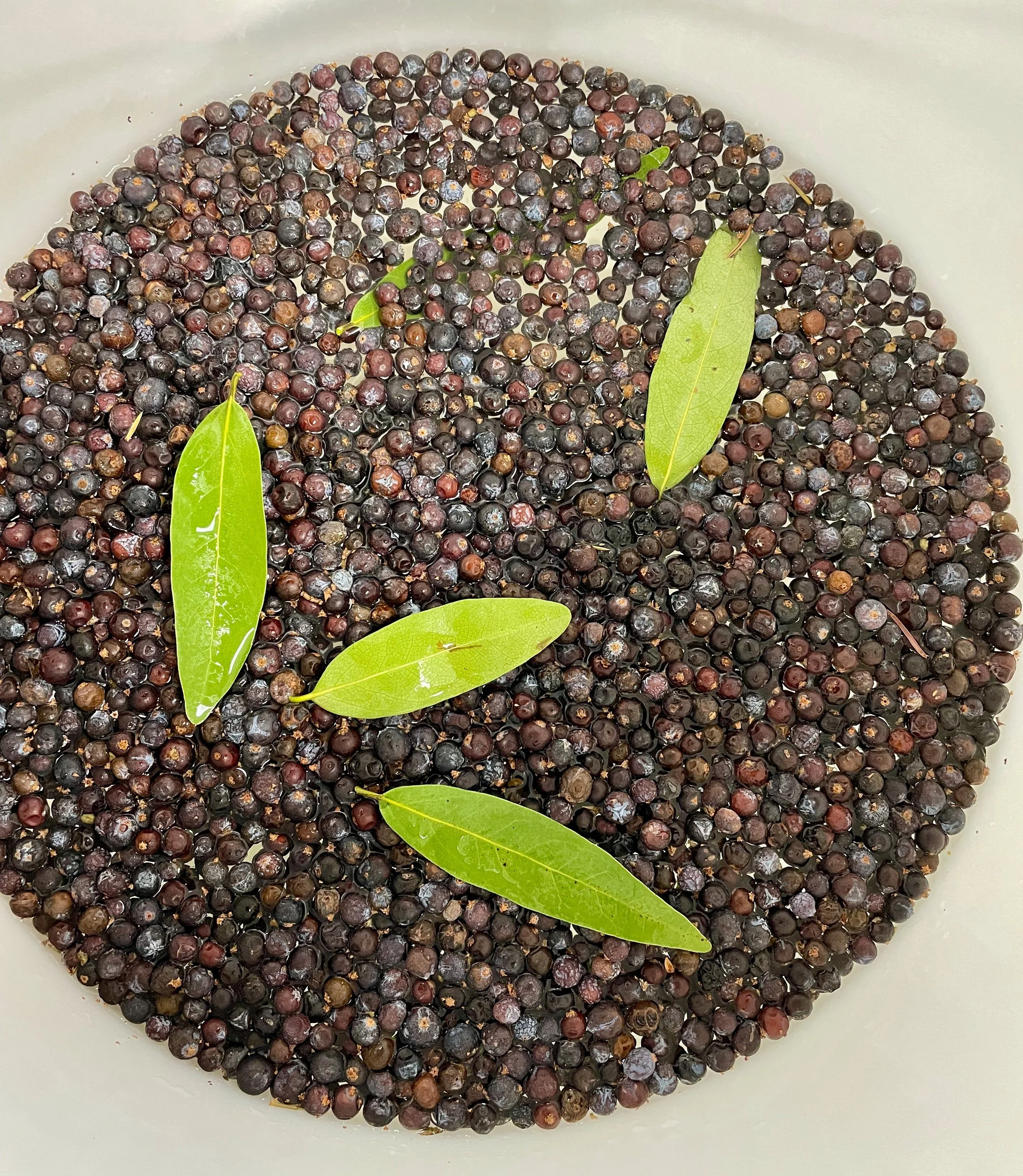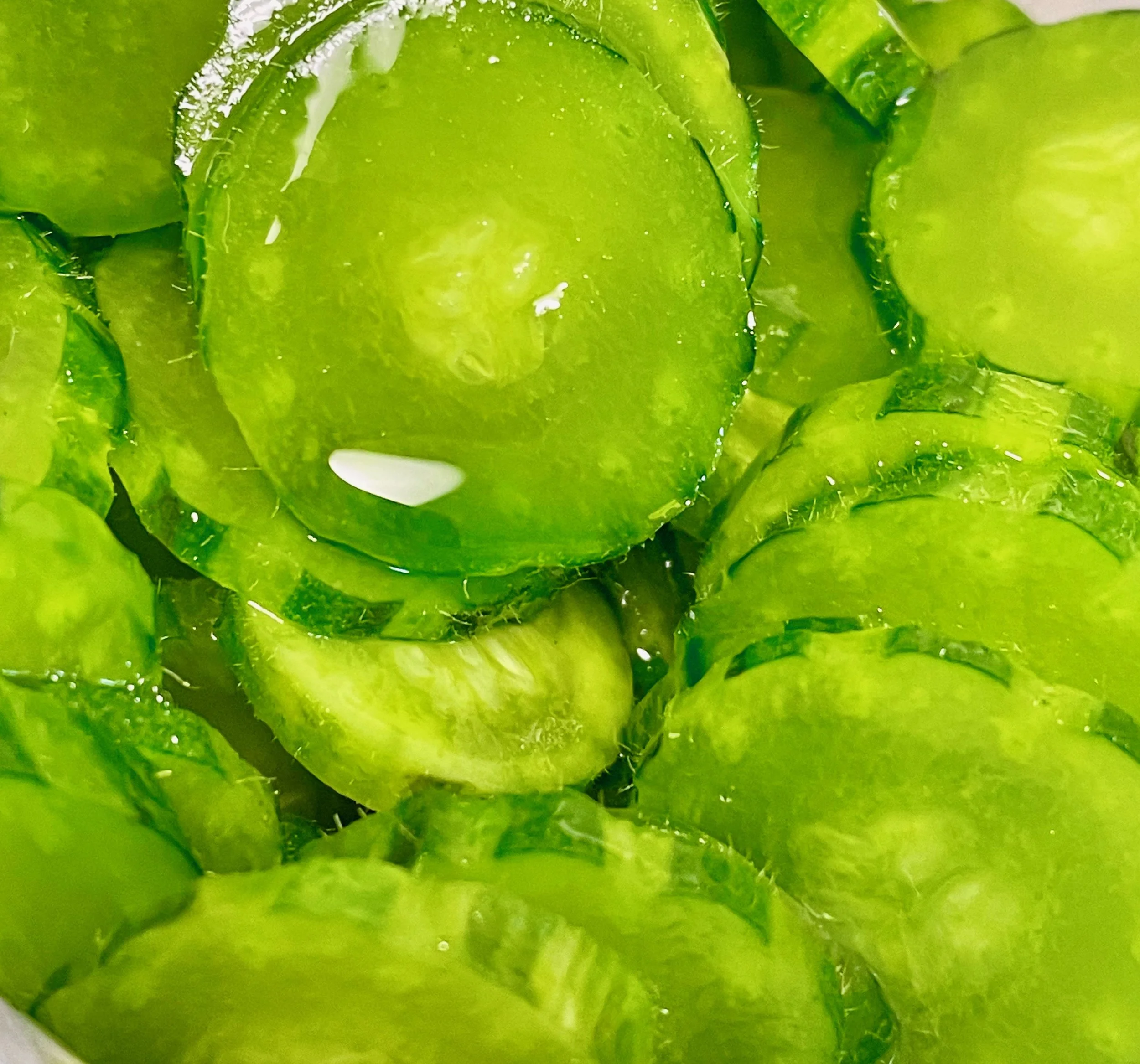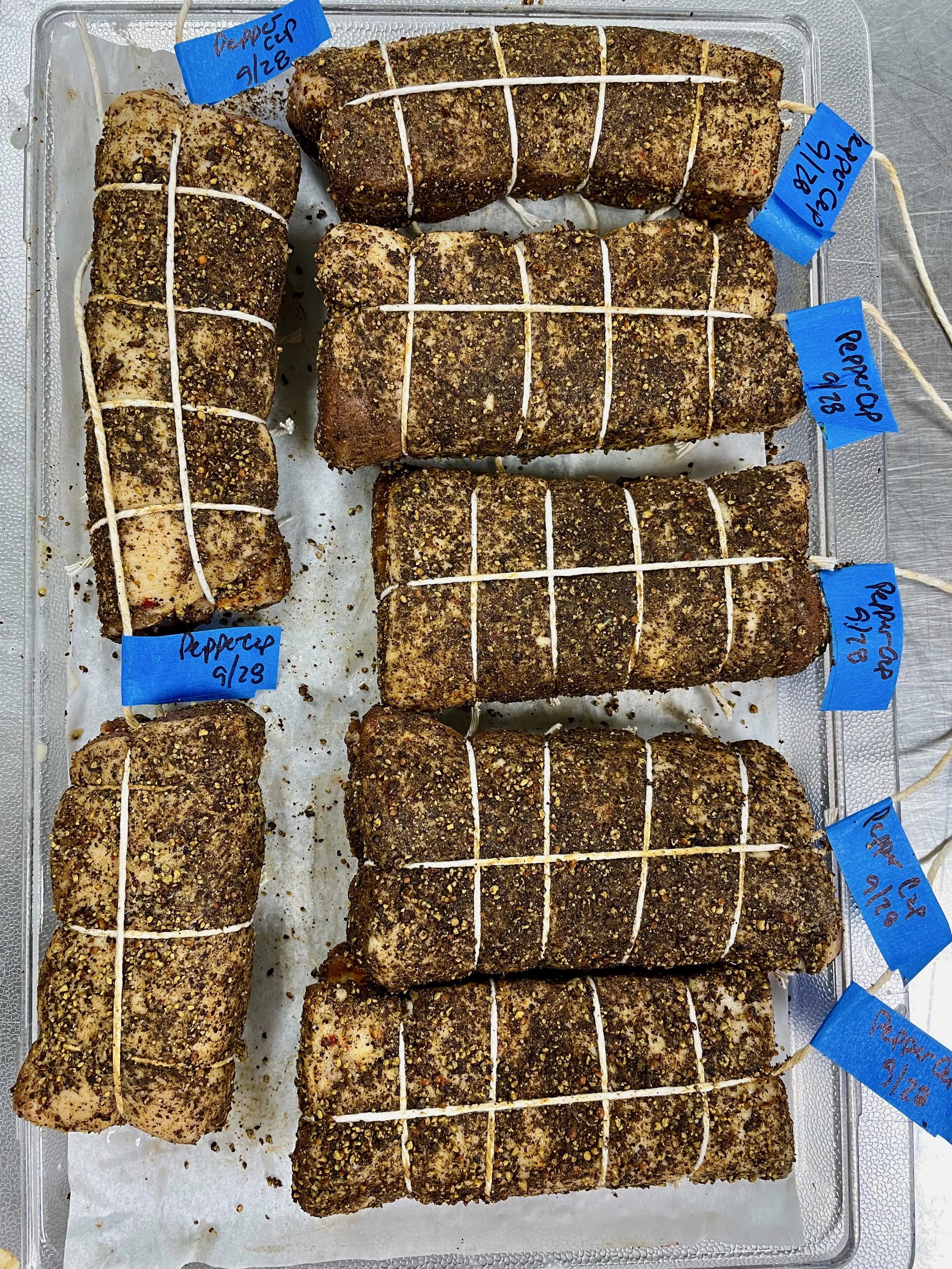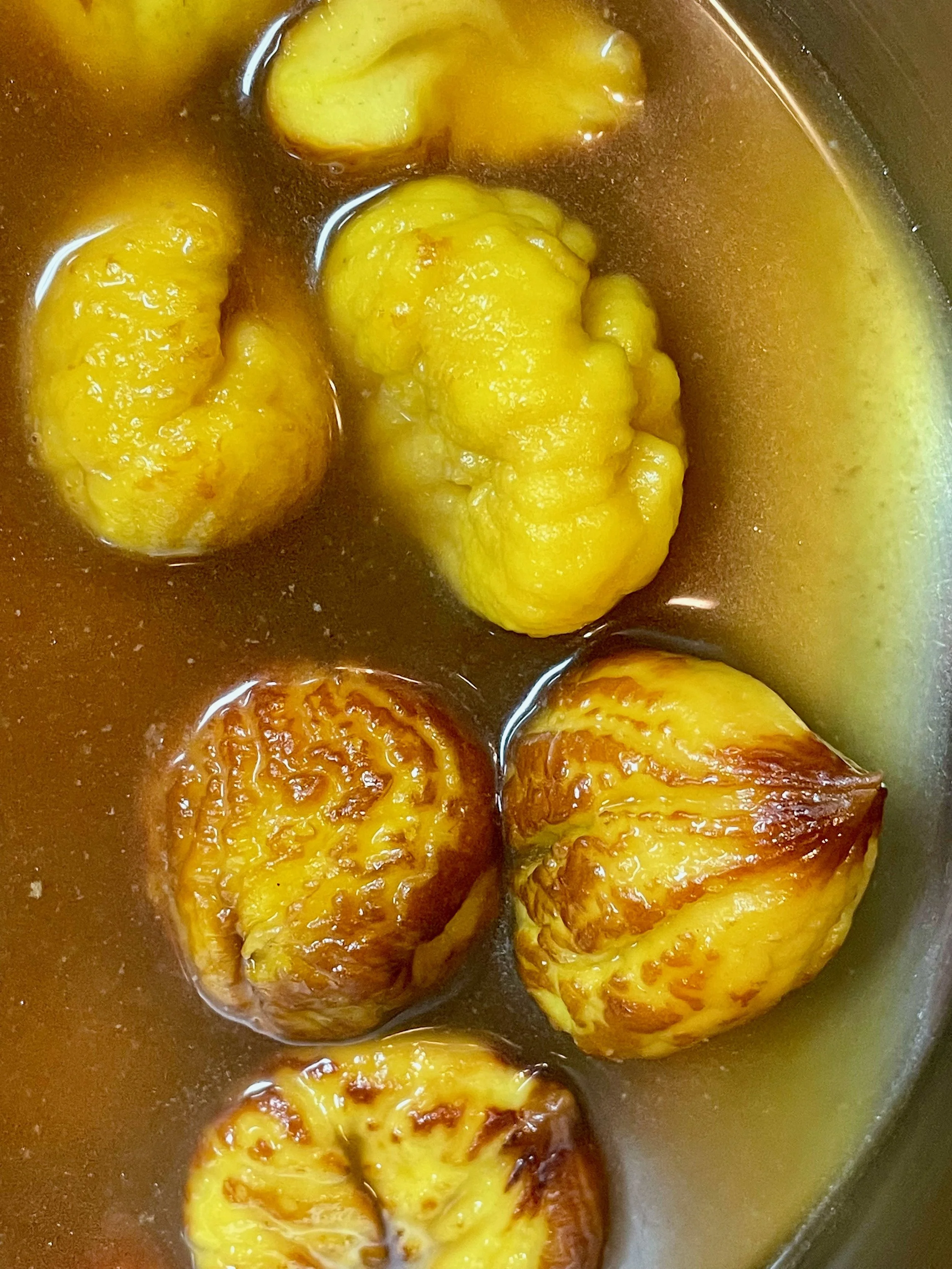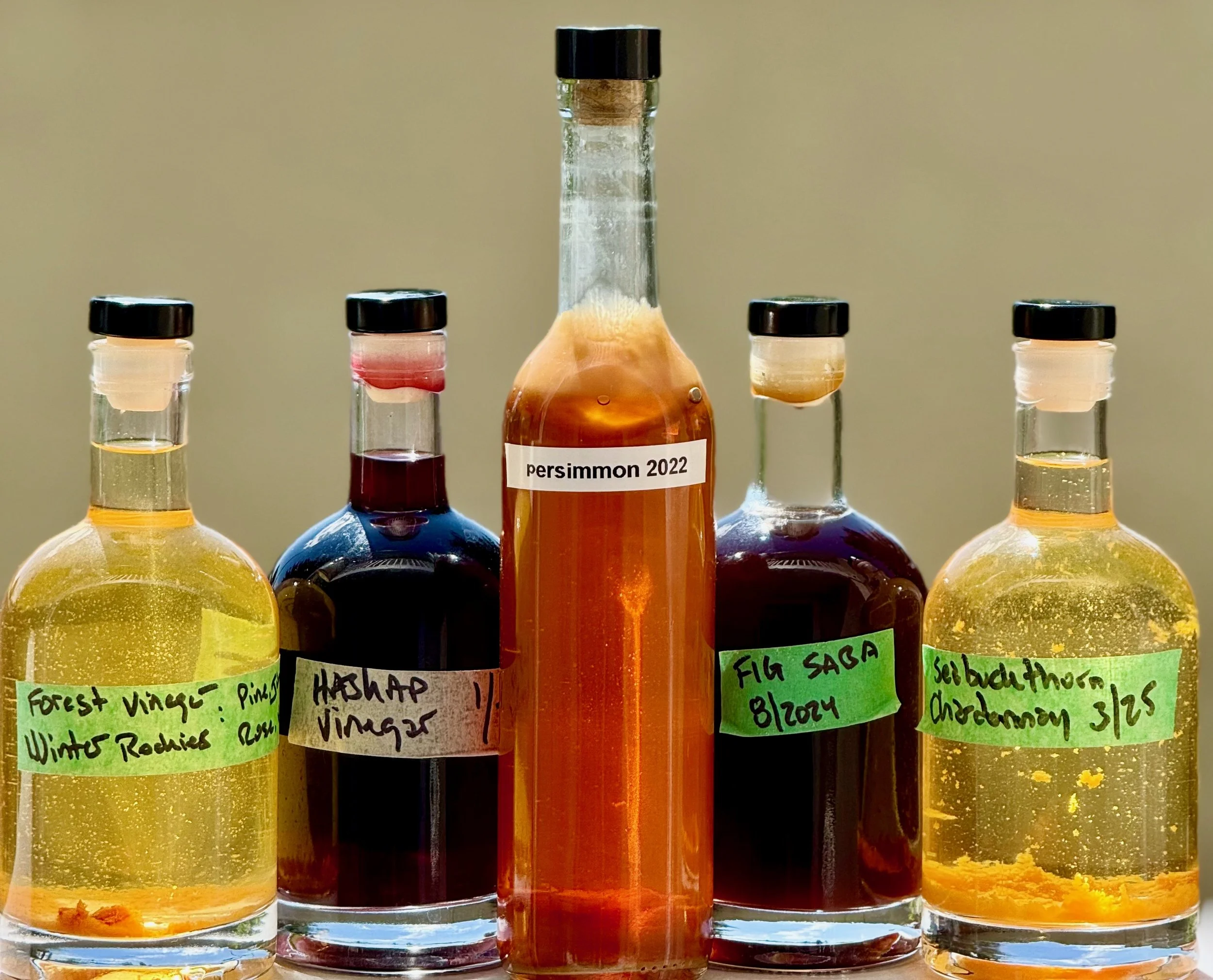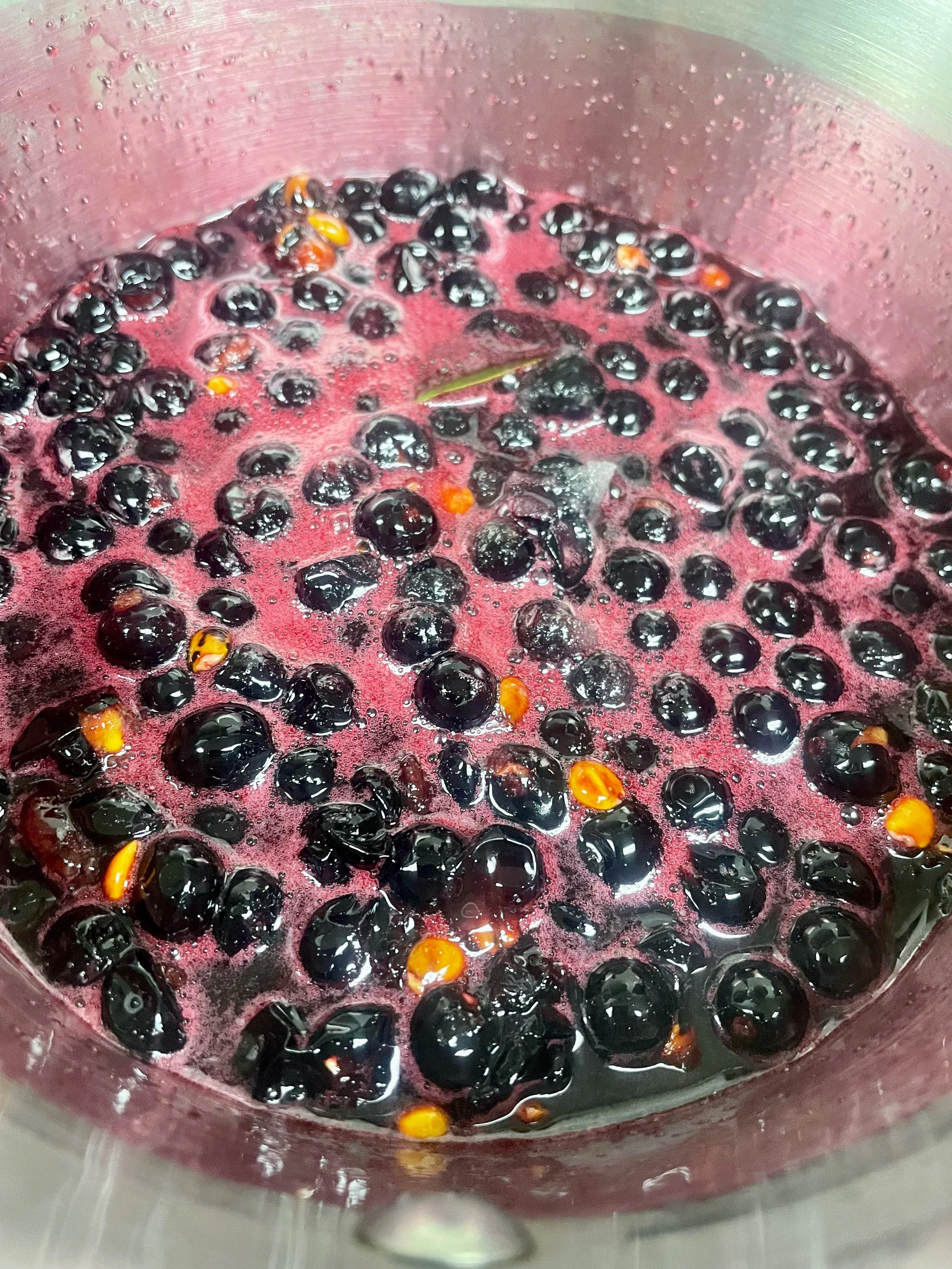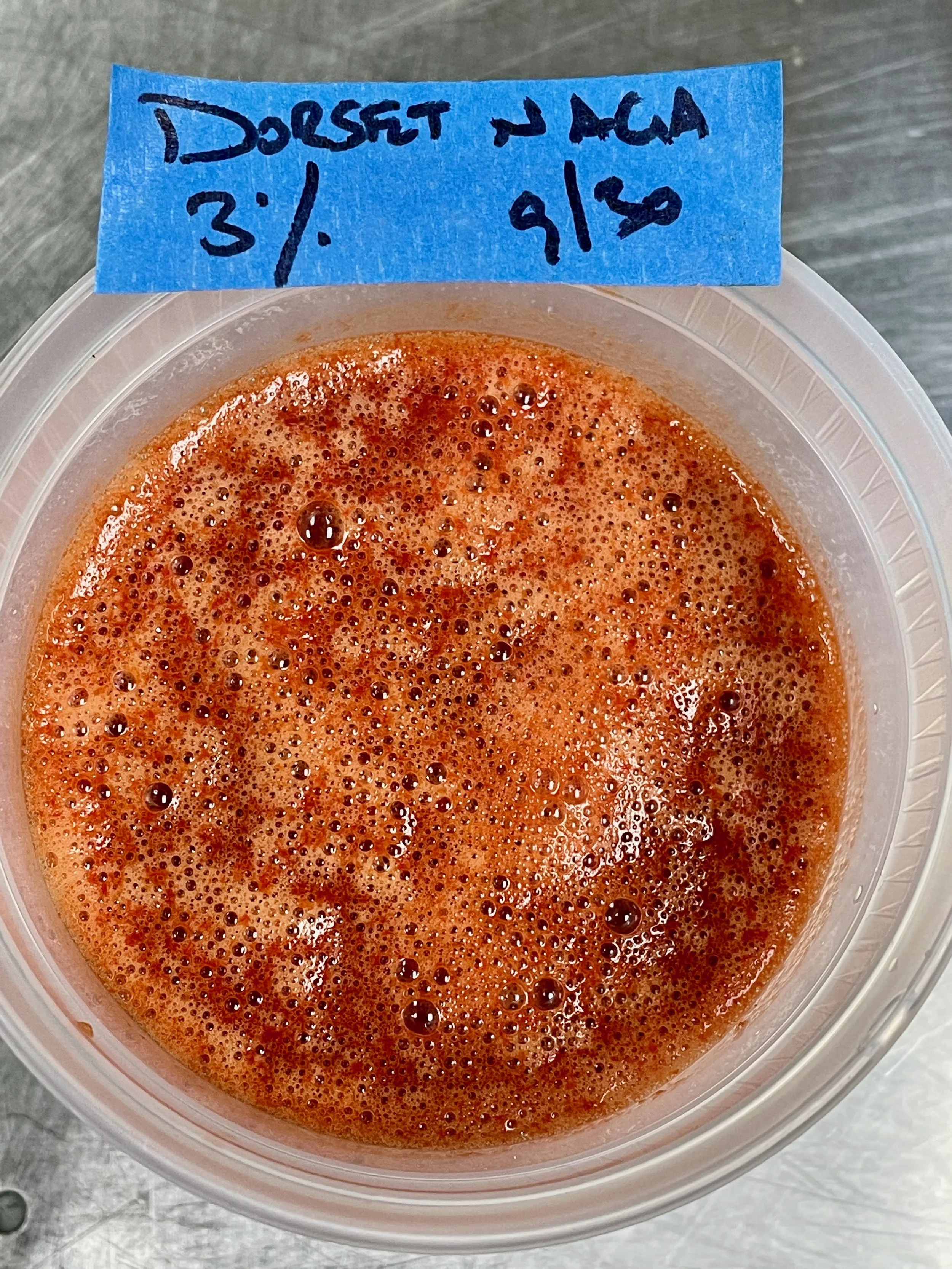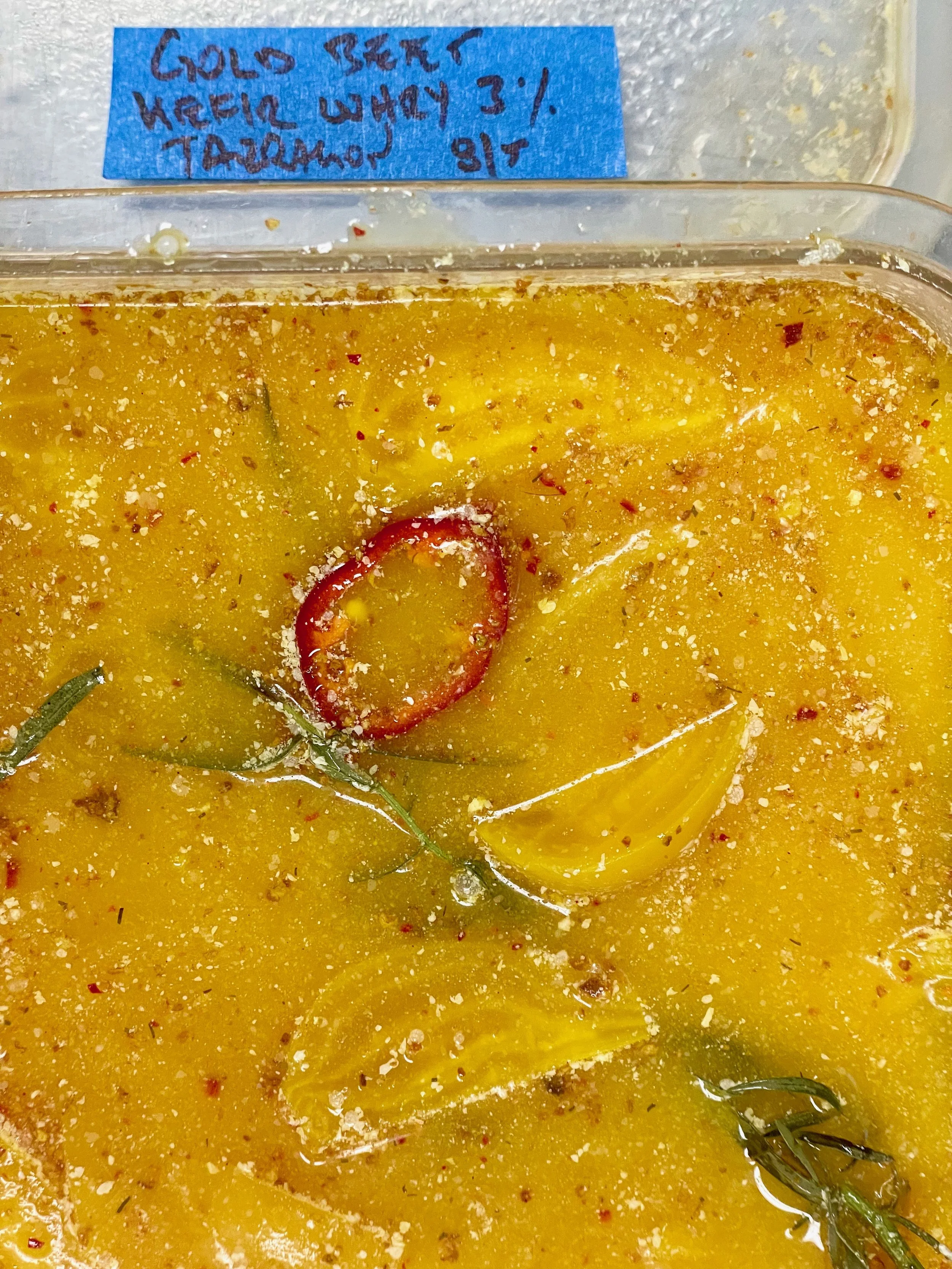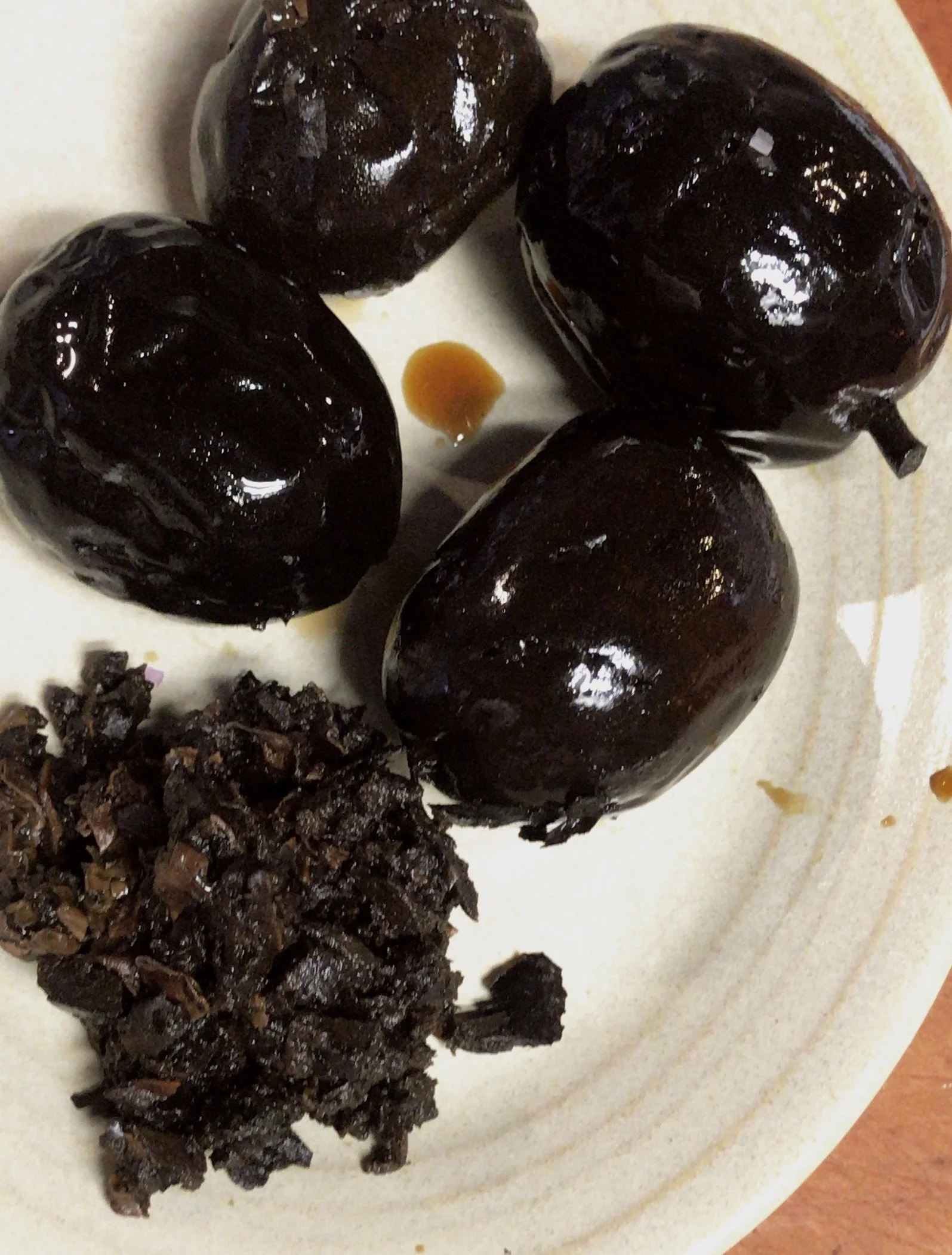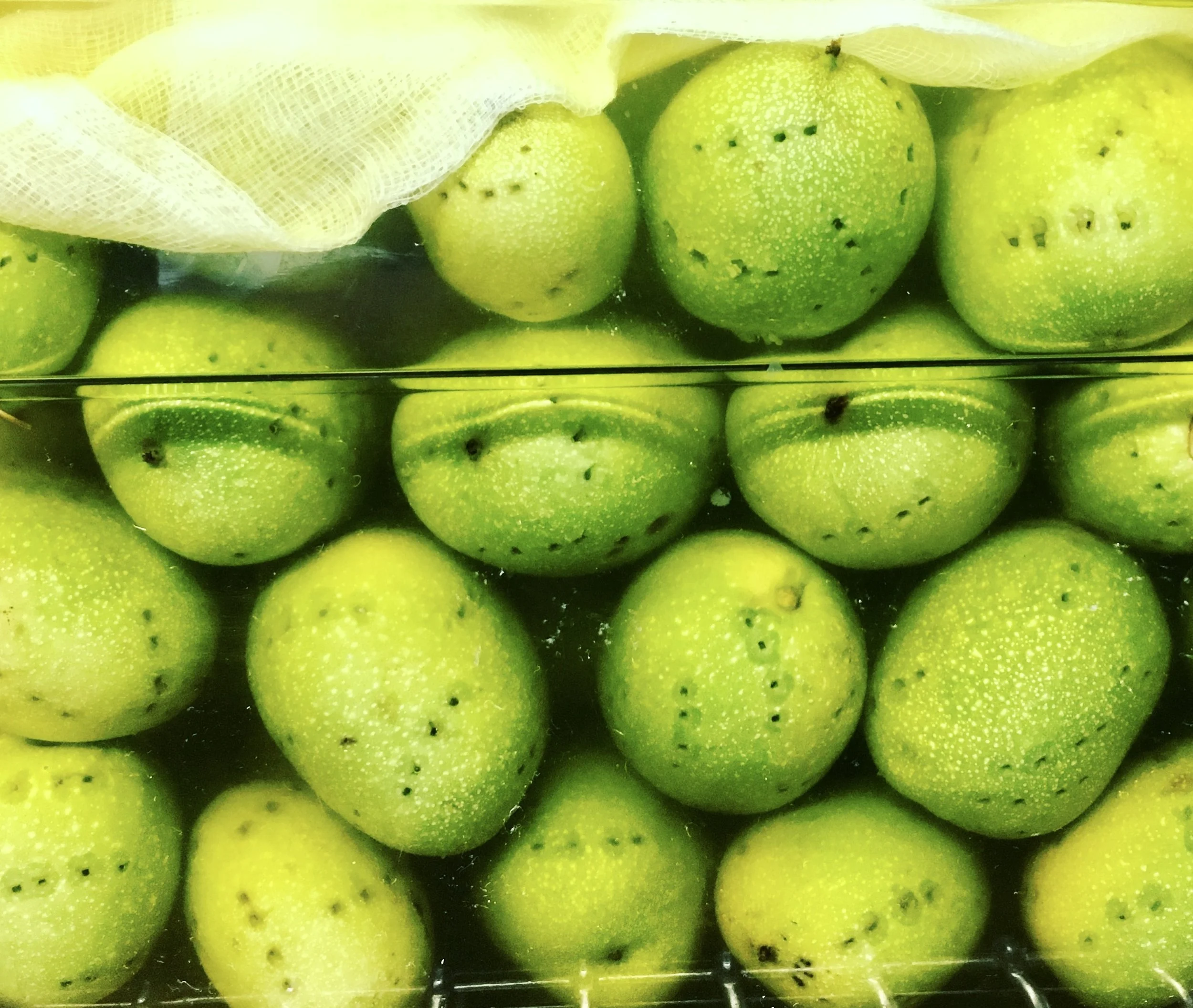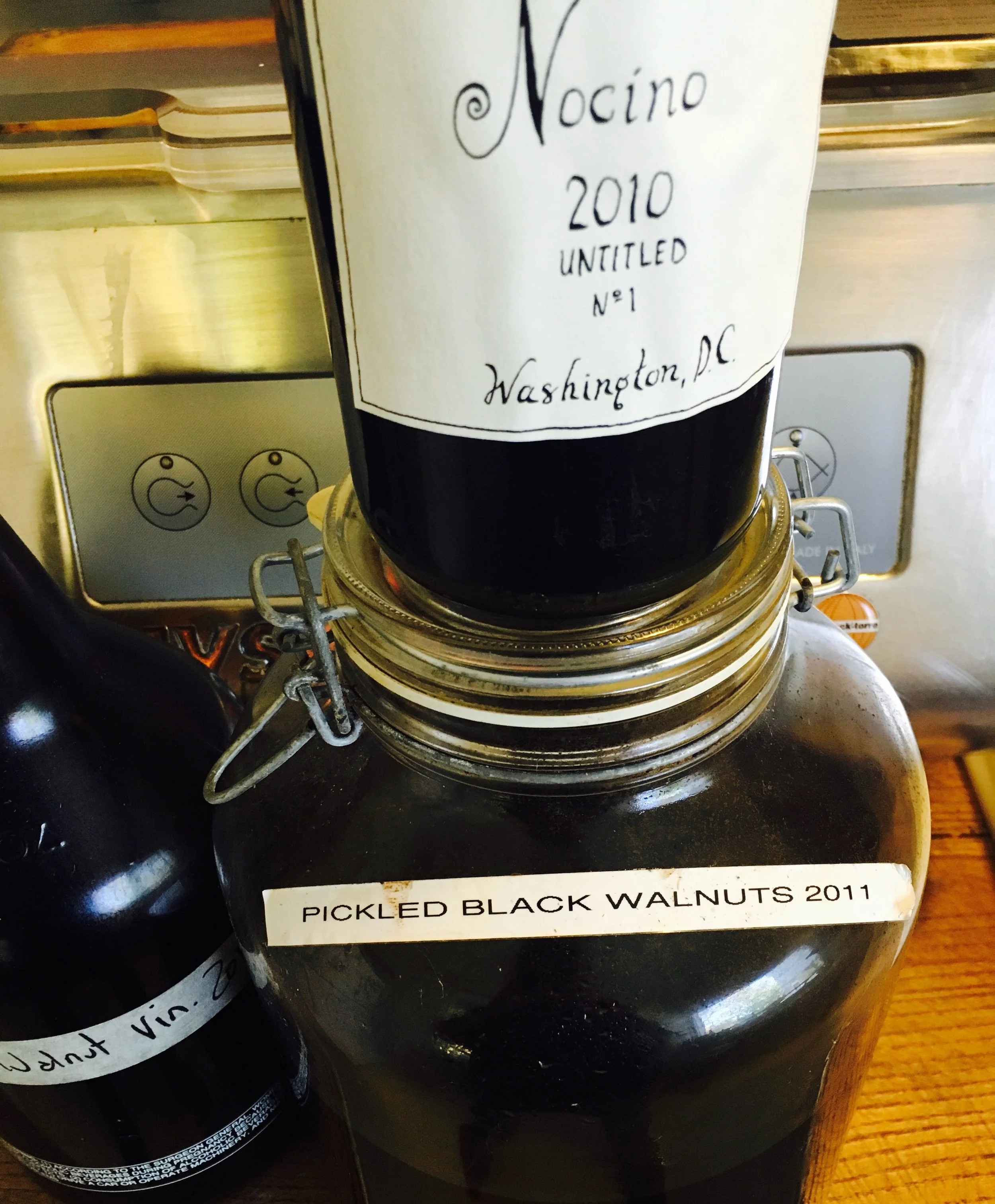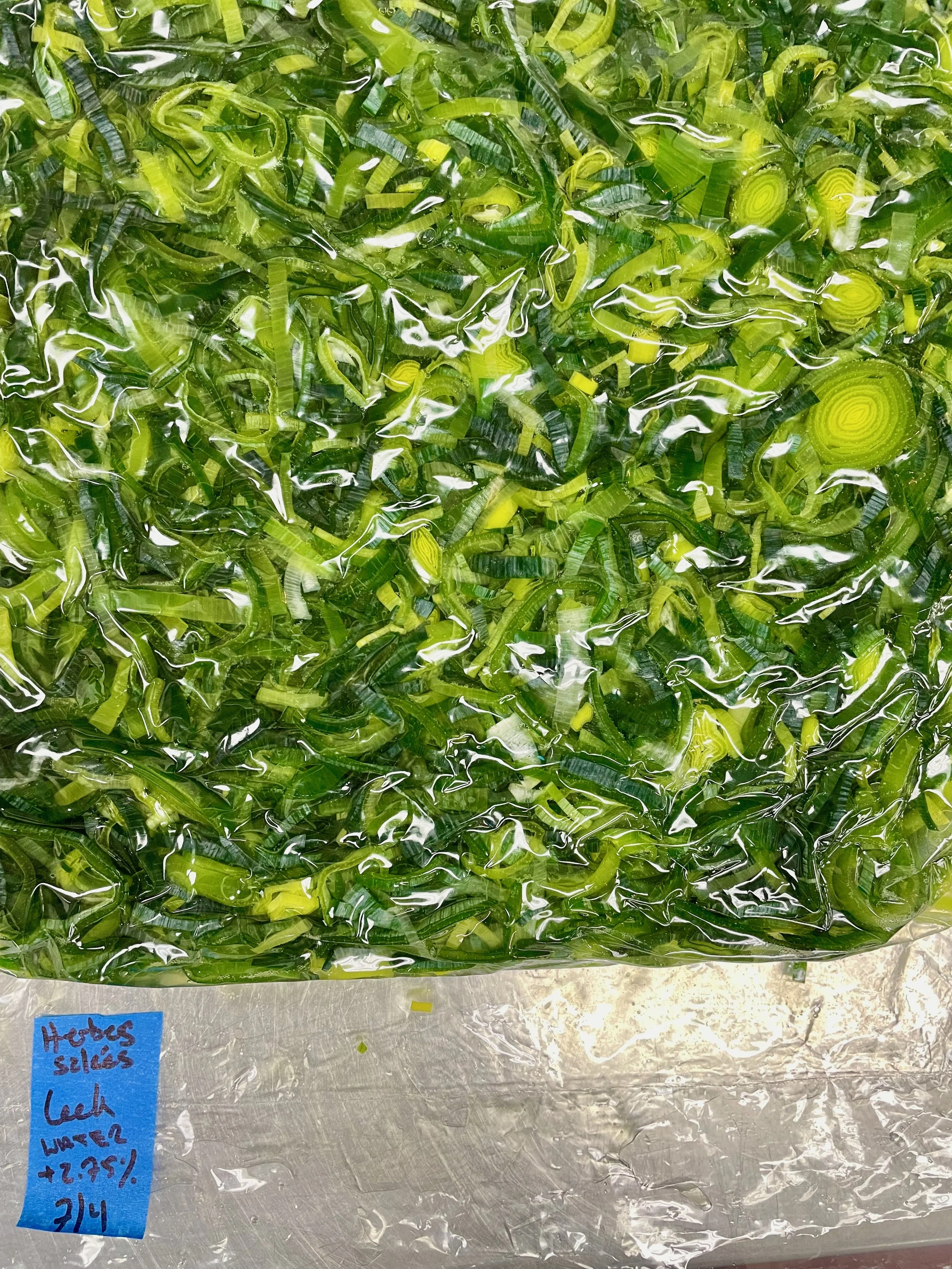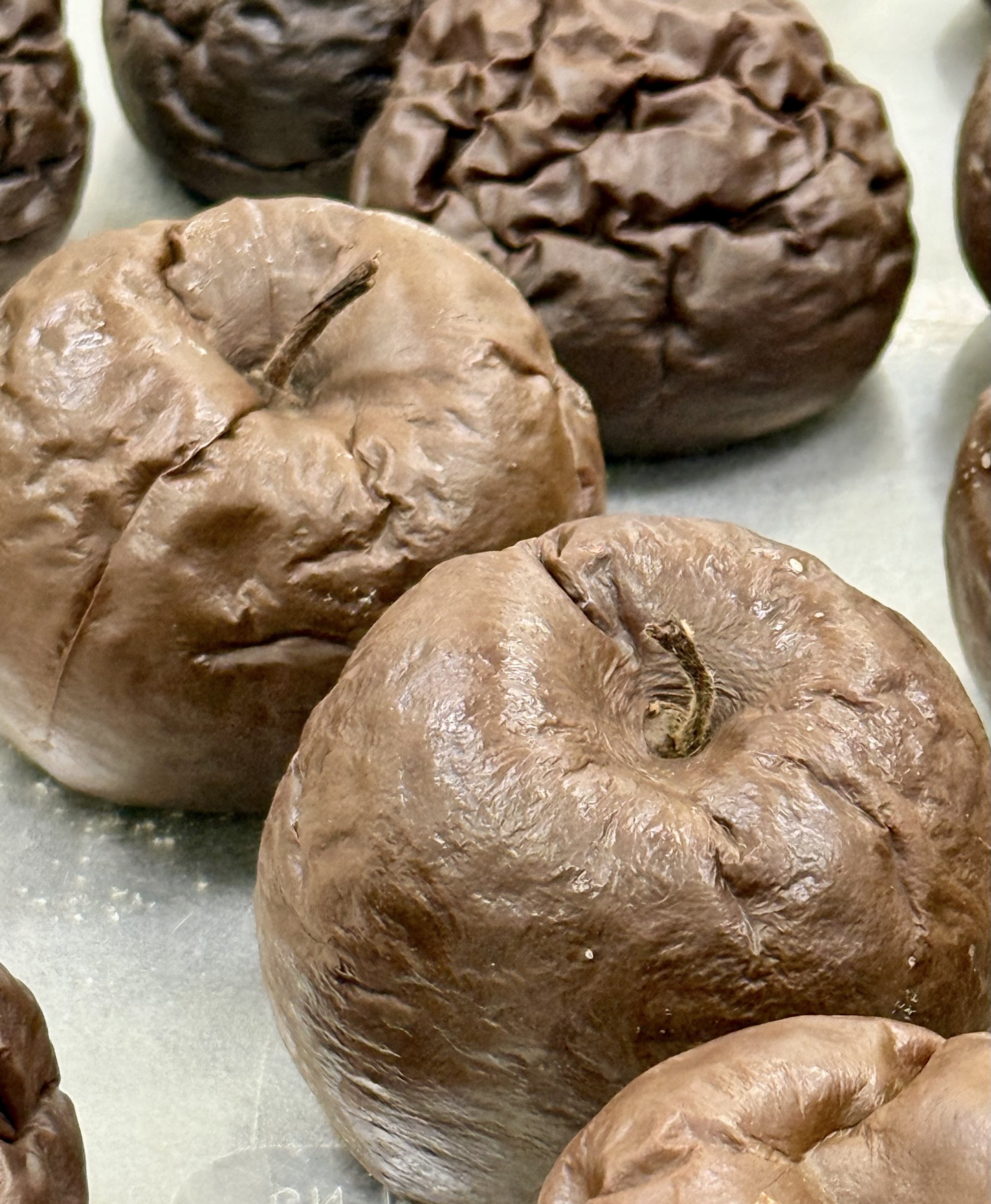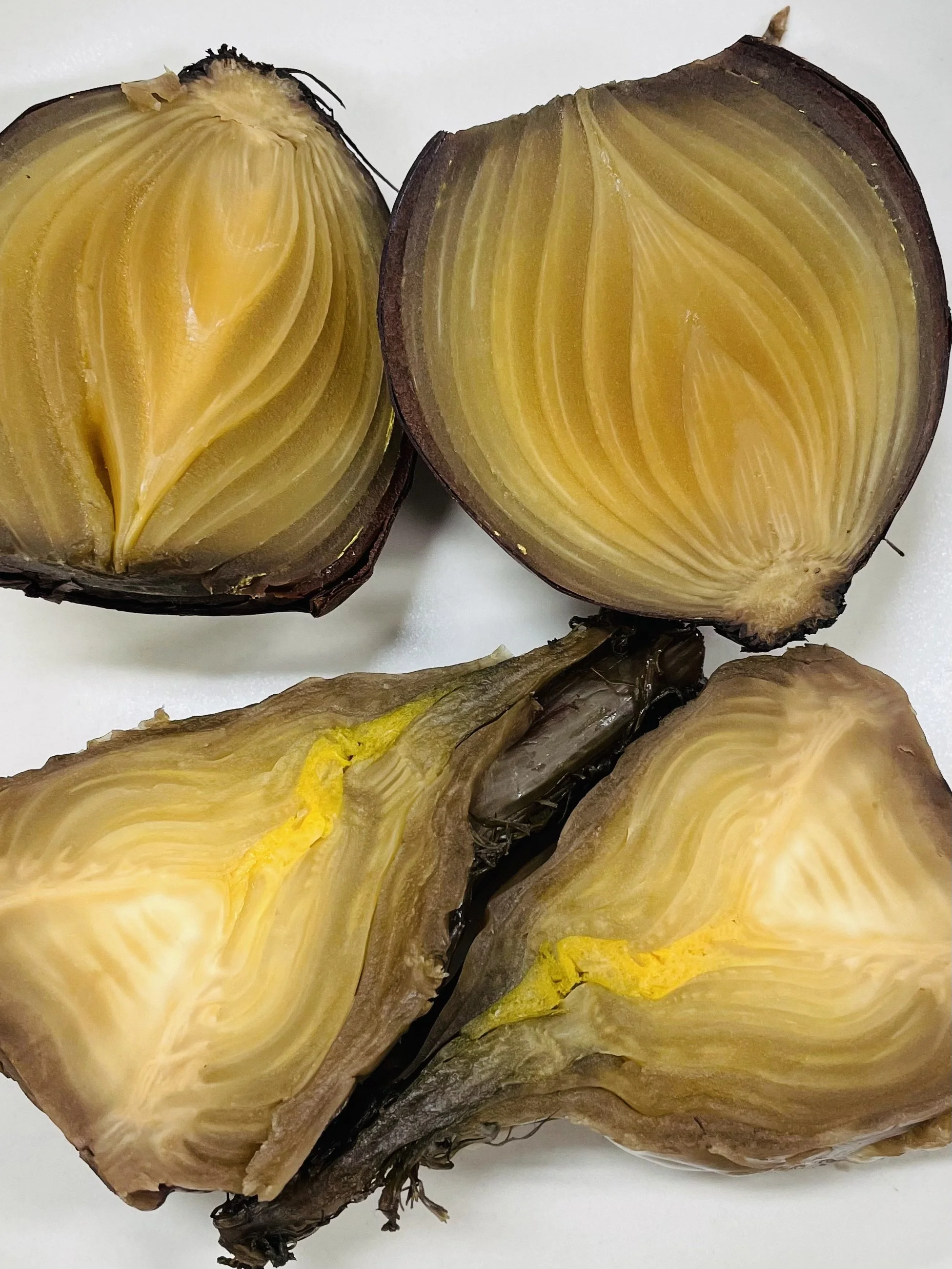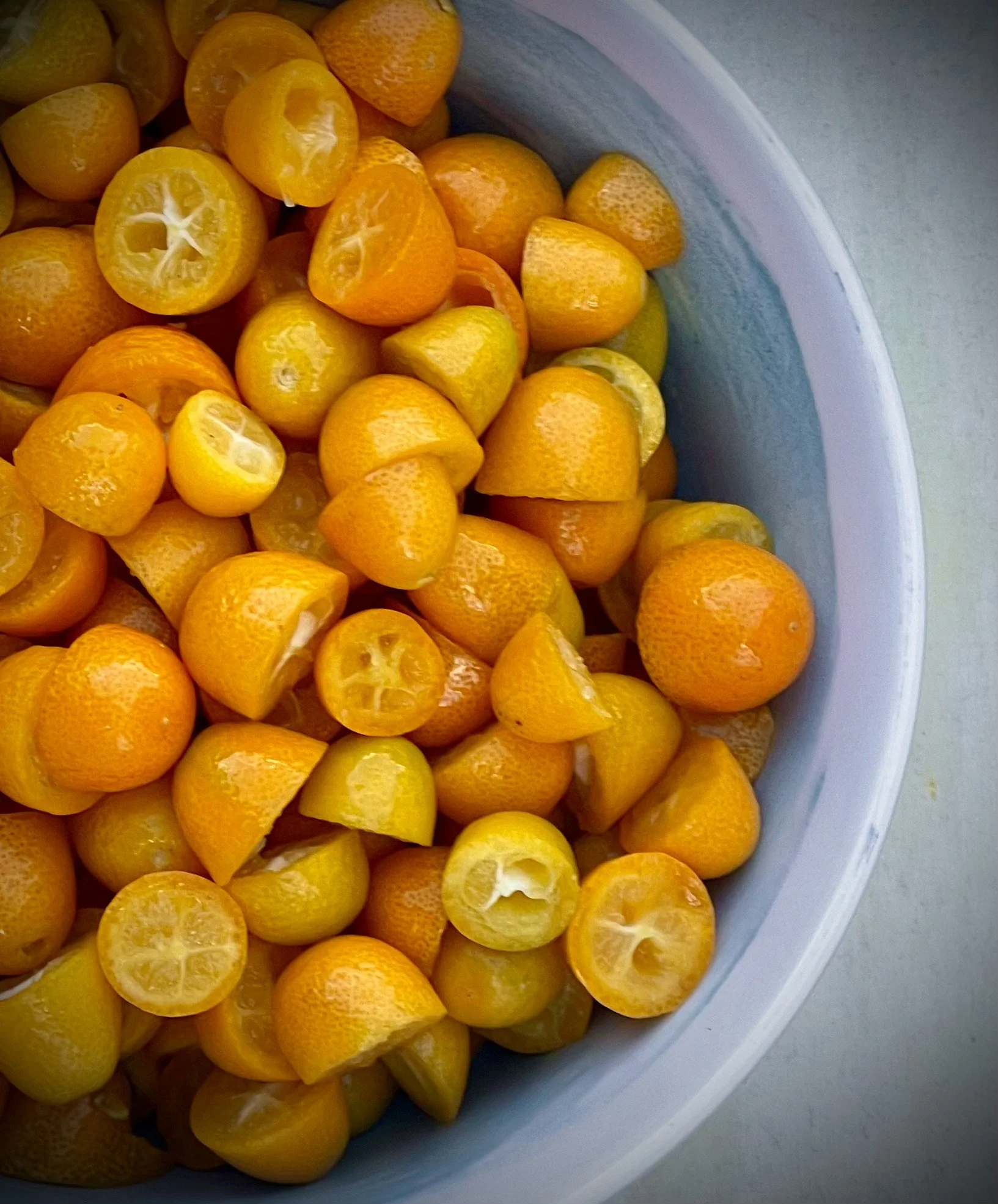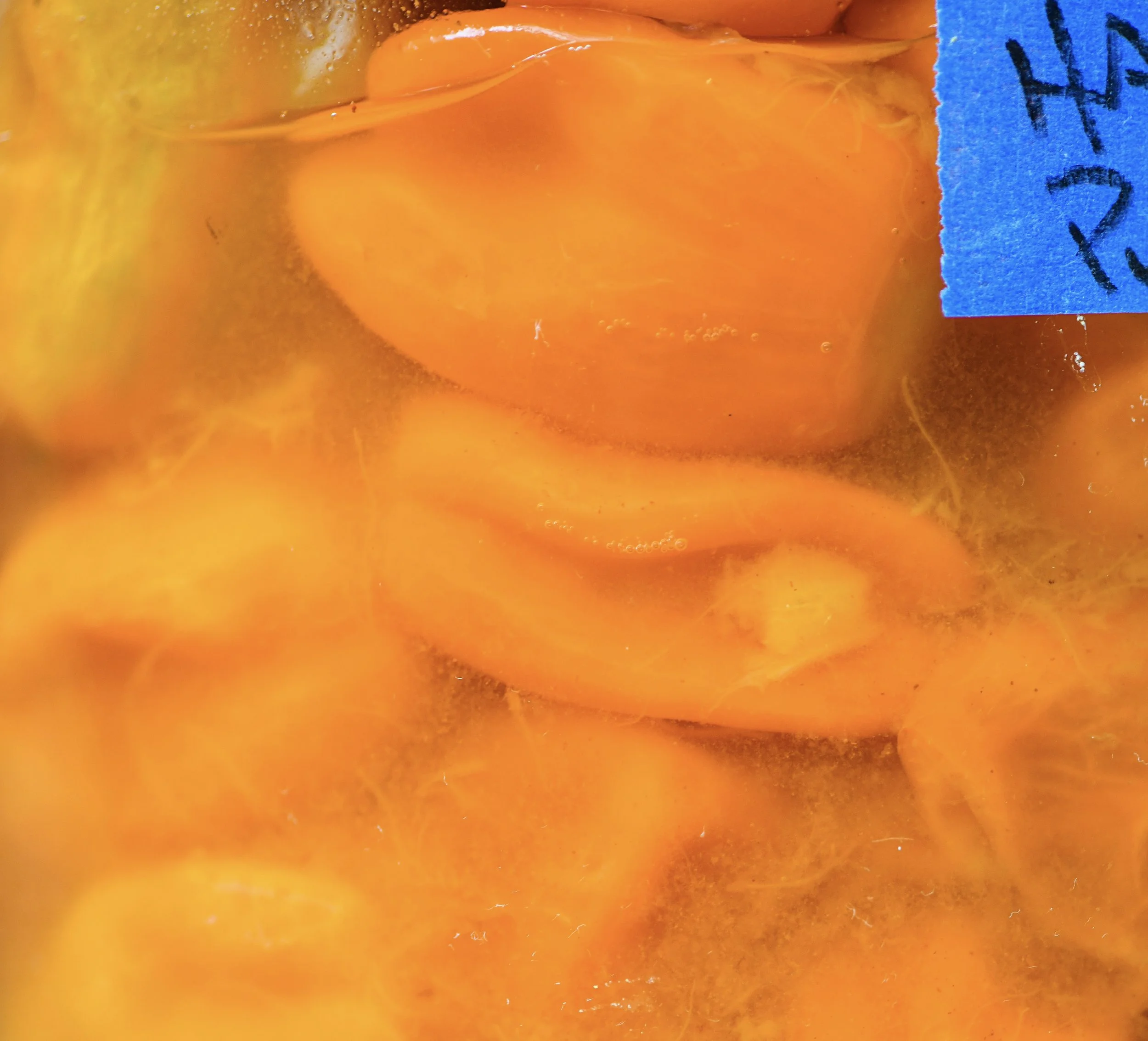
Preserve the Moment
Combined with circular cuisine, preservation builds you a pantry of value-added ingredients that give your kitchen its own unique identity and creative voice.
Preservation is both a craft and a way of extending the life of ingredients.
From koji and lactic acid fermentation to dehydration, freeze-drying, and sugar or alcohol-based methods, these techniques transform fleeting produce into lasting flavors.
Potatoes, 2% salt, fermenting for potato bread
Daikon, Lacto-fermented with turmeric, clementine & aleppo pepper brine
Duck breast, fennel seed & coriander cure, pimentón rub, getting ready to hang and dry
White wine vinegar infusing with fragrant Deodar cedar needles
Daikon pickles, lacto-fermented with milk kefir & beet brine
Kaki-su, a spontaneous vinegar made with persimmon scraps
Winter flower petal syrup, made with rose petals and grapefruit, orange & lemon blossoms, macerated with sugar
Mission olives, hand picked, salt-rub for 5 days, 7% brine with lemon, Fresno chilies, buddhas hand and thyme- 6 months minimum room temp.
Buddha's Hand Citron infused vodka, for specialty cocktails
PT Ranch regenerative pork jowls, koji and pepper cured and ready to hang
Lacto-fermented delta asparagus stems
Meyer lemons preserved like black lime pickles; cumin, urfa chillies, coriander, black salt (kala namak), sugar and several months outside
Hanging hachiya persimmons for hoshigaki, essentially air-drying them until they lose about 75% of their weight and the natural sugars start to collect into a white bloom on the outside.
The beginnings of Buddha's Hand mostarda, these will be slowly cooked with sugar syrup and macerated in mustard oil
Curing pork capocollo, from the shoulder of whole regeneratively-raised pigs. The cure includes black pepper, chillies, fennel, coriander and star anise.
Dhalia flower kombucha
Two garums. The one on the left is with cooked and defatted pork & tomato scraps with koji and salt. The one on the right is carrot top and garlic, with koji and salt, ready to ferment at 38C.
Garums; pork & tomato, carrot top, with koji and salt, fermenting for several months. The pork and tomato turned out great. The carrot tops do not have enough protein for the koji to have much impact. Next time we will add a legume to add more protein, which will deepen the flavor with its breakdown into amino acids.
From top right: Daikon, lacto-fermented with beet kefir; radishes and their greens fermented with beet brine; pickled rhubarb
Autumn Blaze nectarines with 25% sugar, macerating overnight for preserves
Blood oranges preserved like lemons, making a hibiscus flower salt and adding rosemary and California bay leaves, top with some lemon juice to ensure adequate acidity.
A refractometer is a great tool to test the sugar level for syrups, sorbets and preserves.
Charbono grapes and grape-vine ash, slowly cooking to make saba.
Charbono grapes slowly reducing with grape vine ash and sugar, into saba or vincotto.
Koji (Aspergillus oryzae) inoculated and growing on steamed quinoa.
Koji-fermented pork loin, inoculated with Aspergillus oryzae and grown under warm, humid conditions for 36–48 hours, develops a white mold that tenderizes the meat and intensifies savory, umami-rich flavor—perfect for charcuterie.
Smreka is made with wild juniper berries, sugar and water, left to ferment for several months into vinegar. This one has California Bay leaves as well, and it is a great flavoring with game and game birds.
Sichuan pickled radishes (paocai) , a really interesting lacto-fermented pickle with chillies, local herbs and spices, usually starts with a cooked brine with salt, sugar, chillies and some alcohol. It is designed to be infinitely reused.
Flash-pickled serpentine cucumbers, tossed in basil oil to brighten the color and flavor.
Fermented habanero hot sauce
Pepper crusted beef sirloin cap (pichana) to hand and age before roasting
Fresh chestnuts can be preserved in sugar syrup. Care must be taken not to cook at too high a temperature or they can get tough.
Kumquats pickles: coriander, sugar, salt, lime juice, black salt, hyssop flowers.
Various vinegars and sabas made with wild ingredients and fruit scraps.
California coffee berry preserves- a wild berry found on the West coast. The seeds look like coffee beans and have been roasted, ground and drank for a caffeine-free coffee substitute.
Dorset Naga hot sauce, lacto-fermented, one of many small batch single chili hot sauces made from locally sourced peppers.
Gold beets preserved in kefir whey and salt, this kefir brine cures vegetables very quickly and has a great flavor due to the already acidic kefir and the rich flavors from the milk.
Pickled green walnuts are a way to utilize the entire walnut, before the shell forms. The process involves piercing, soaking, sun-drying and macerating with vinegar and spices. This process turns them jet black, with a tangy-sweet, earthy flavor reminiscent of balsamic vinegar, spices, and mild nuttiness.
Whole green walnuts pierced and infusing in neutral spirit for several months before becoming nocino.
Black walnut vinegar, nocino (black walnut liqueur) and whole pickled, all get better with age.
Herbes Salées, or Québec-style salt preserved herbs. This technique preserves extra garden herbs, usually a combination of chives, scallions, savory, celery leaves, parsley and/or chervil. I also make it with single ingredients like leeks. Add salt and ferment 2 weeks. Always add some sort of allium and the savory flavor and aroma with add magic to any braise, broth or sauce.
Black apples and garlic are made by slowly fermenting whole fruit or bulbs in a warm, humid environment for several months. Natural enzymes and the Maillard reaction transform their sugars, turning them deep black and soft with a rich, molasses-like sweetness, gentle acidity, and subtle balsamic notes—perfect for sauces, purees, or savory-sweet accents.
Onions, shallots and any type of garlic ferment well, but onions will take several months and don't achieve the same intensity of flavor. Fennel loses its sweetness and increases acidity, becoming an acquired taste.
Kumquats cooked in syrup for dessert or cheese or a fatty dish





